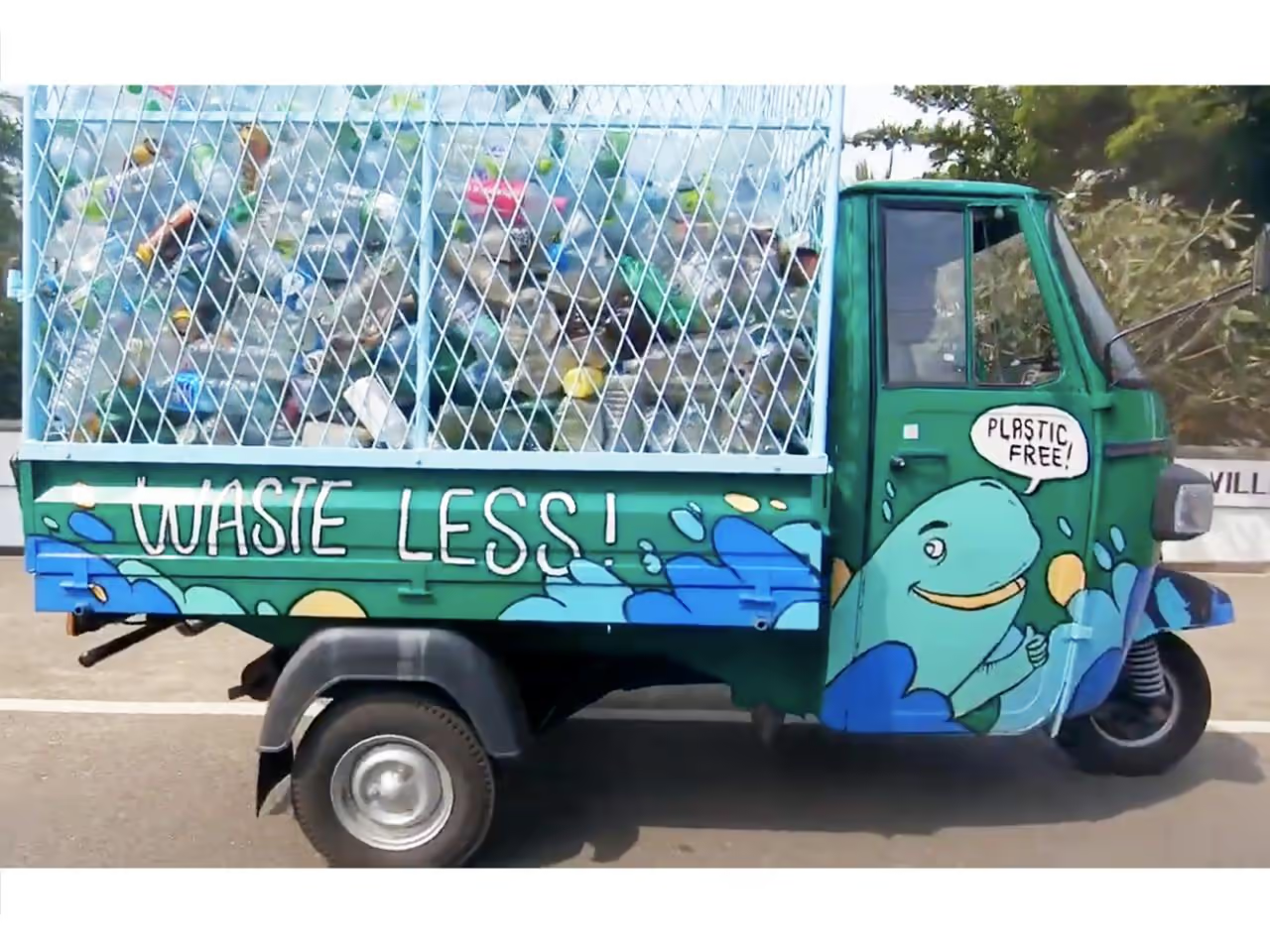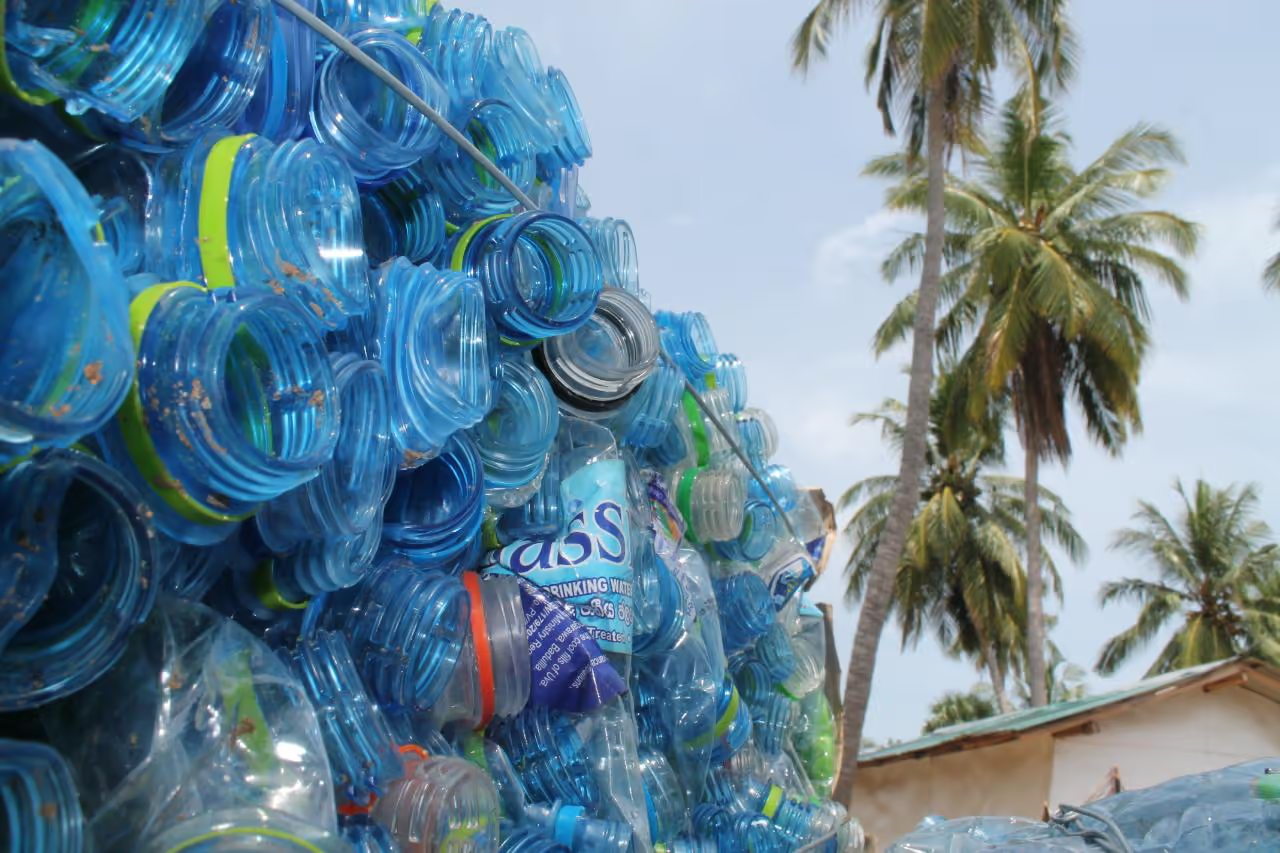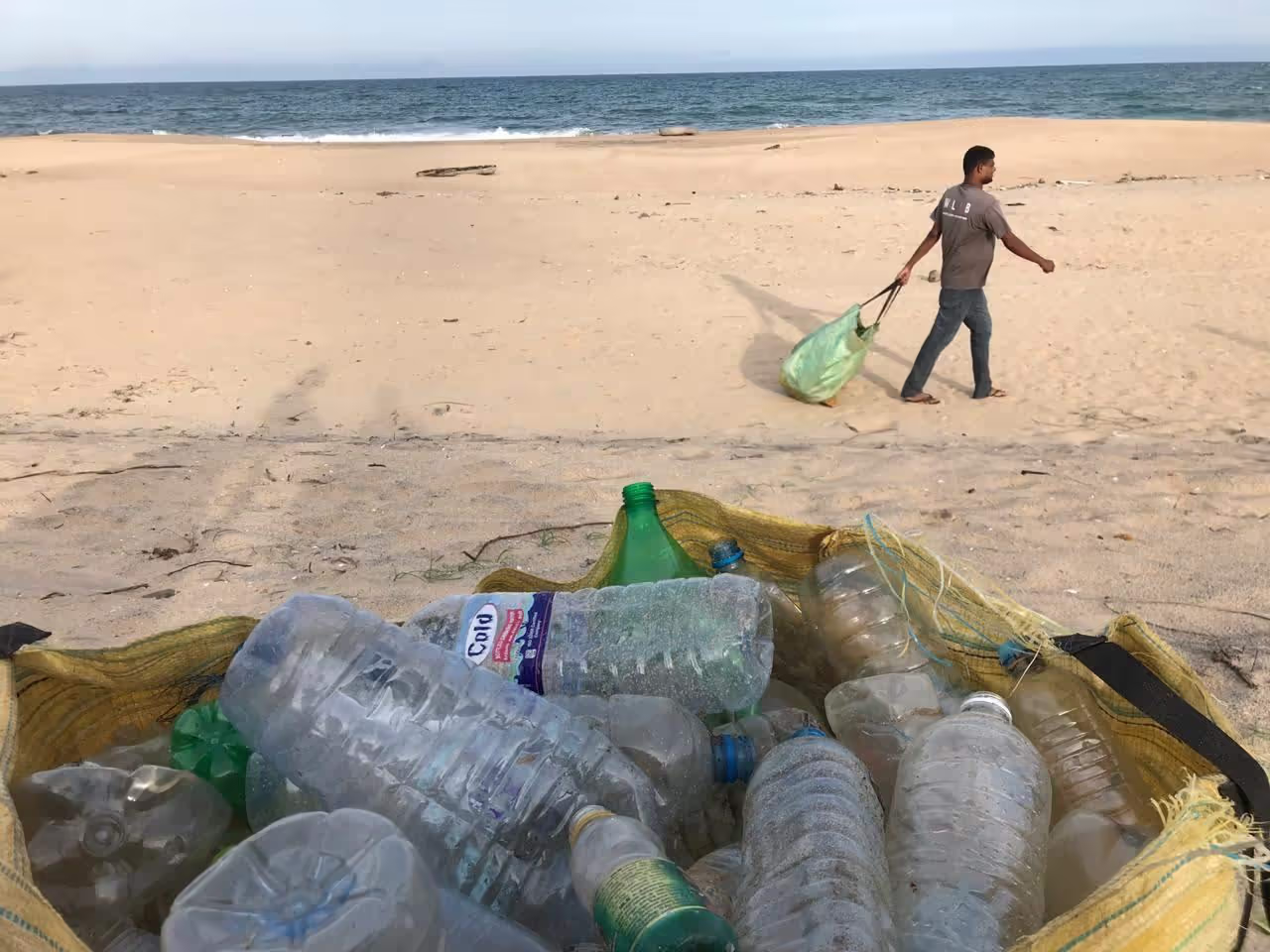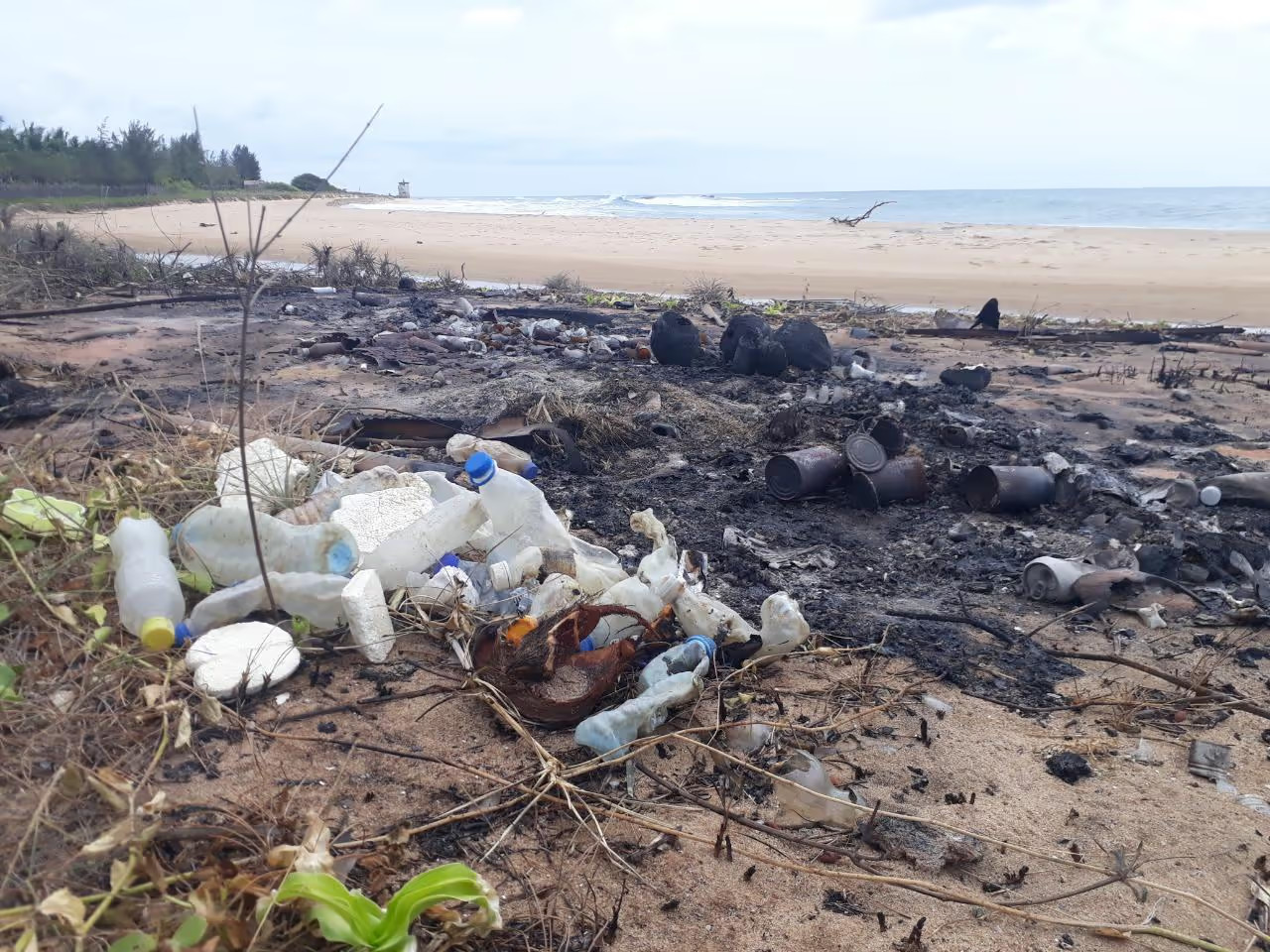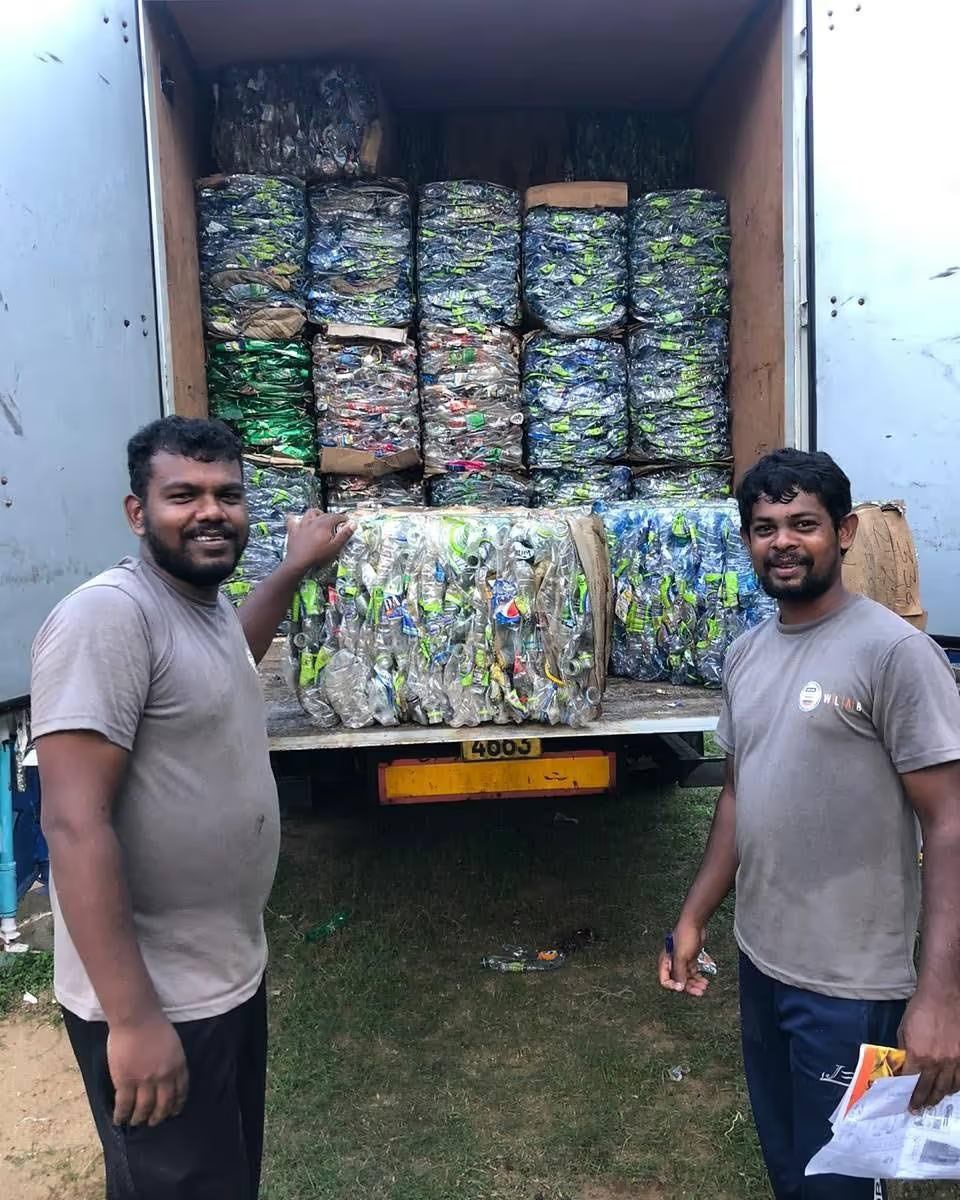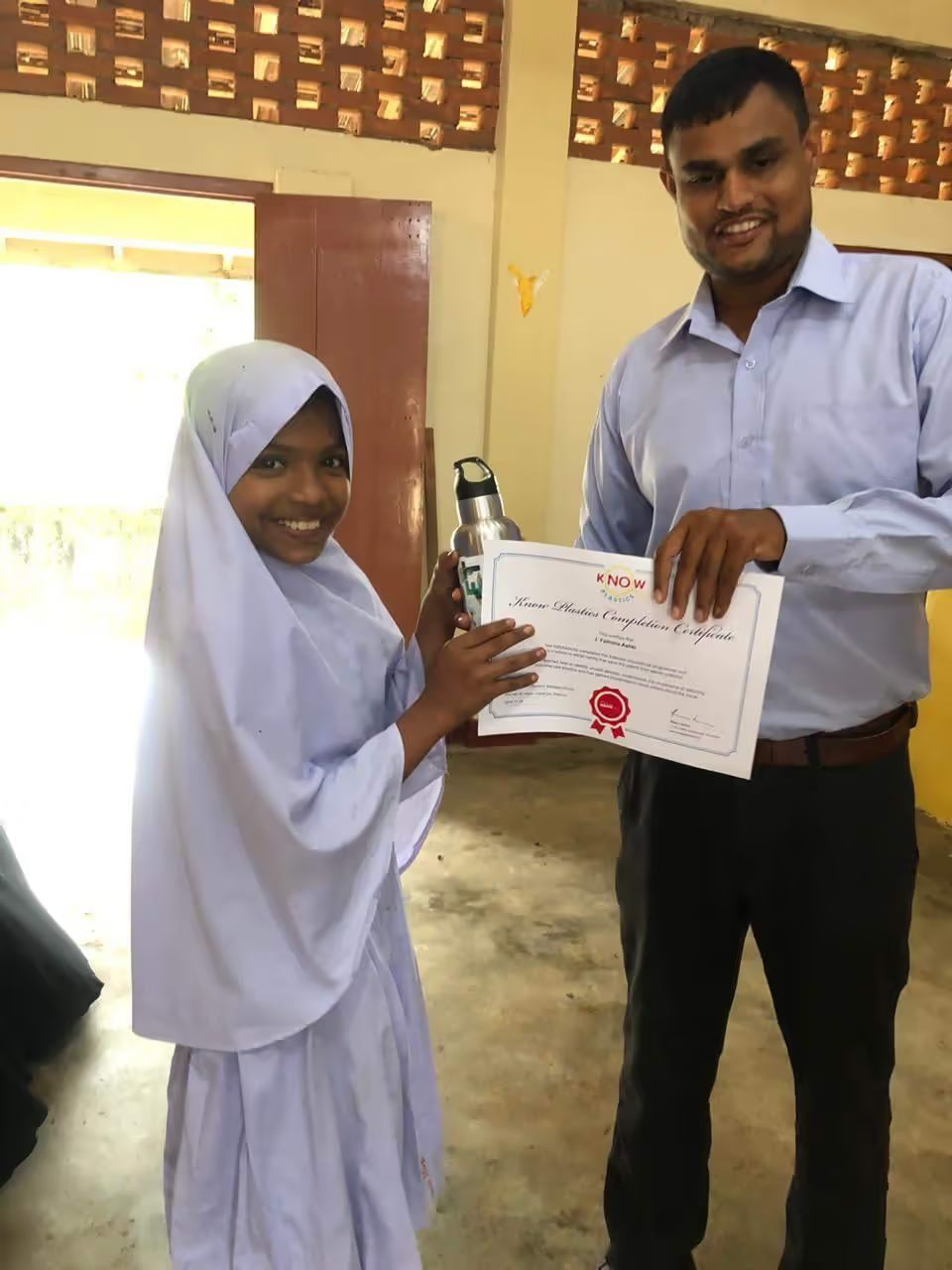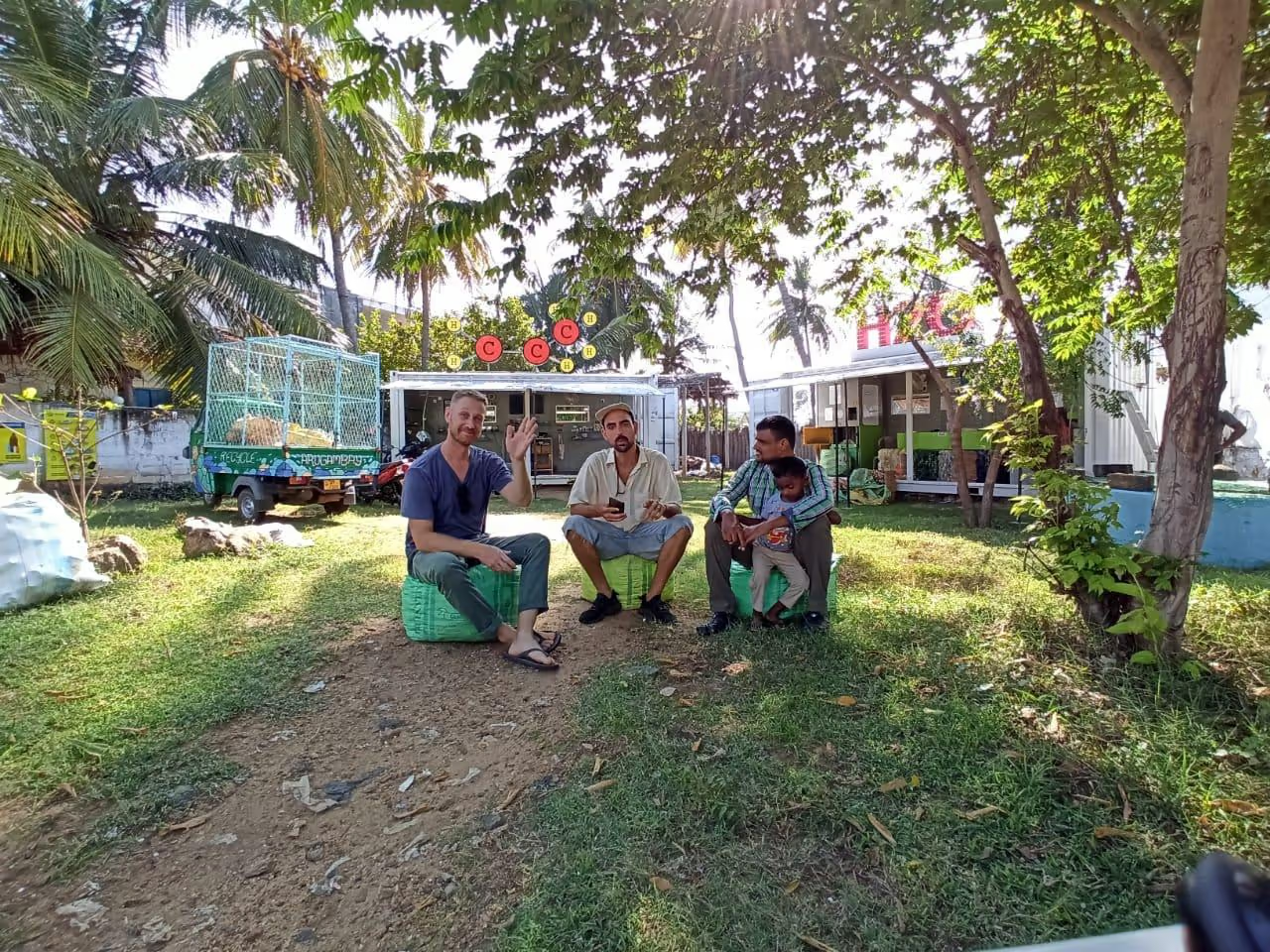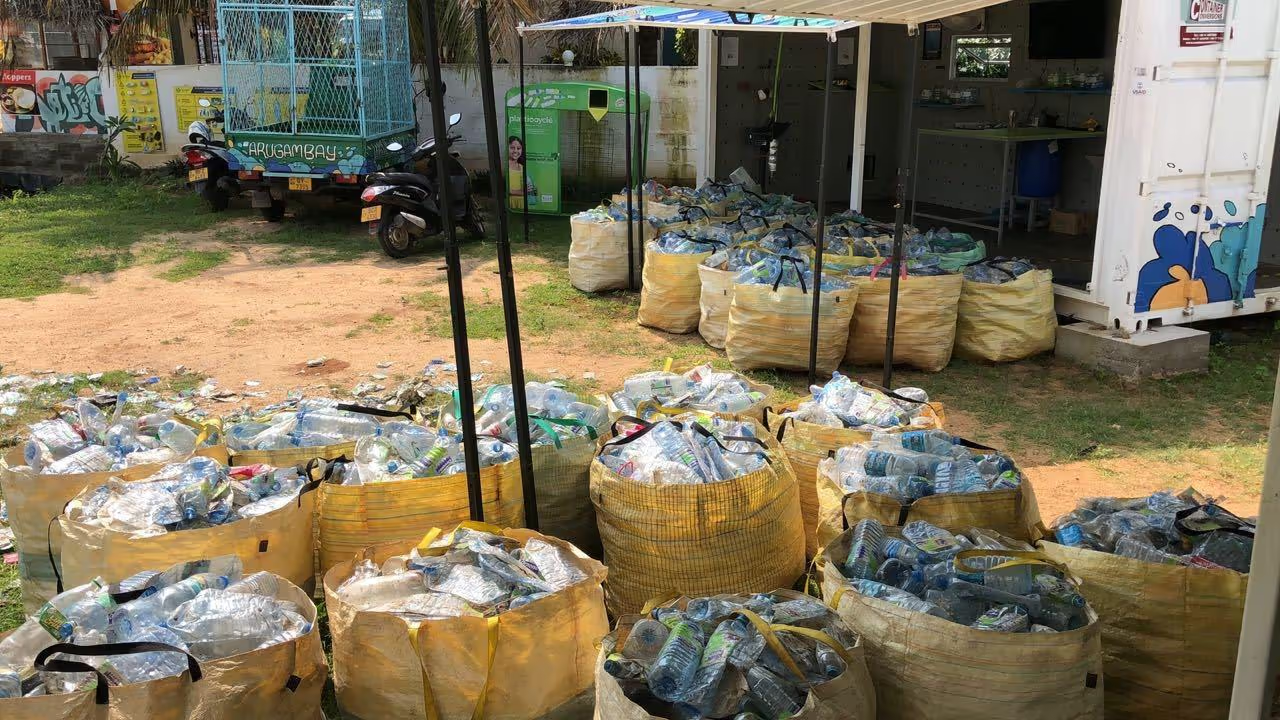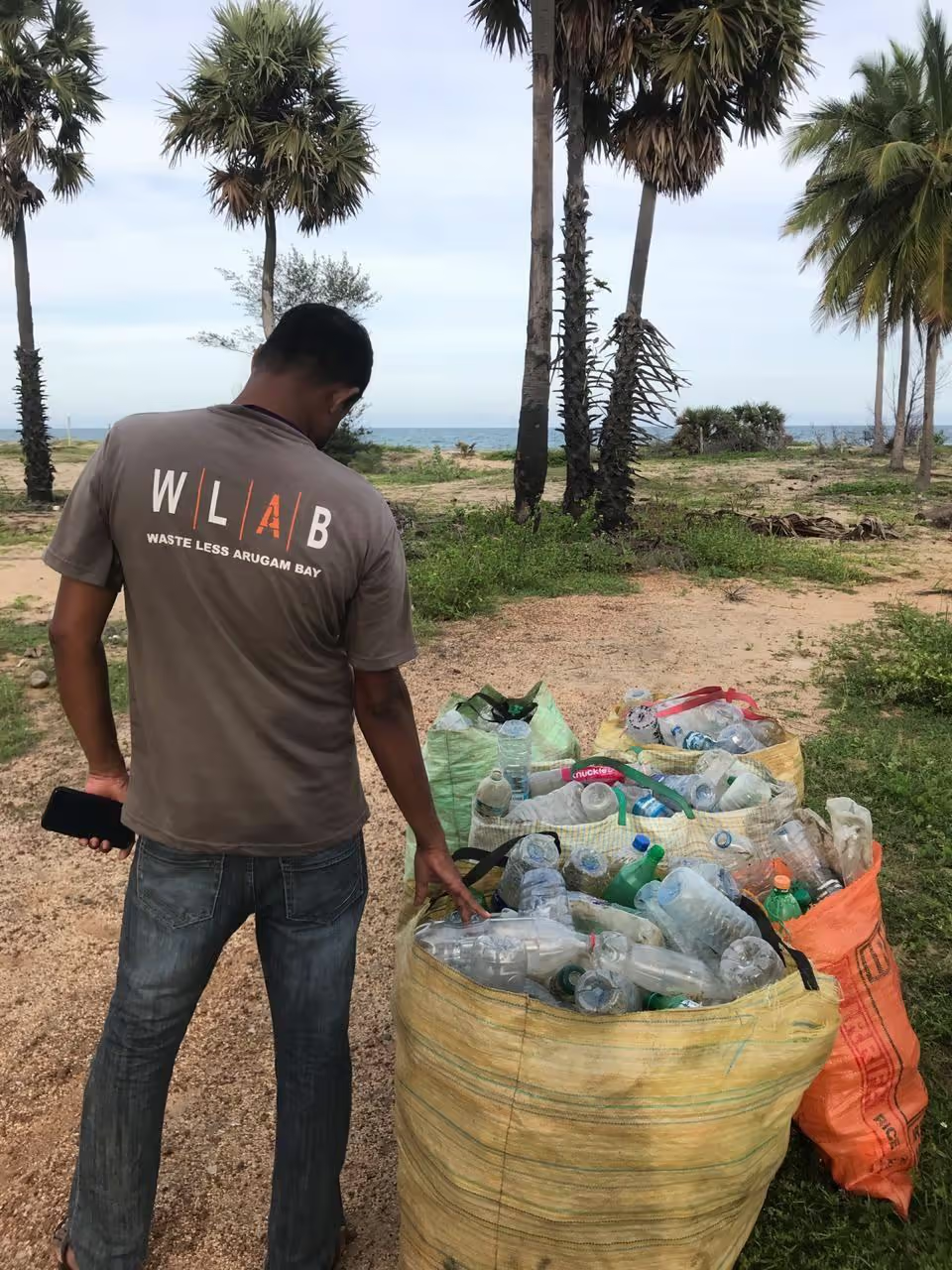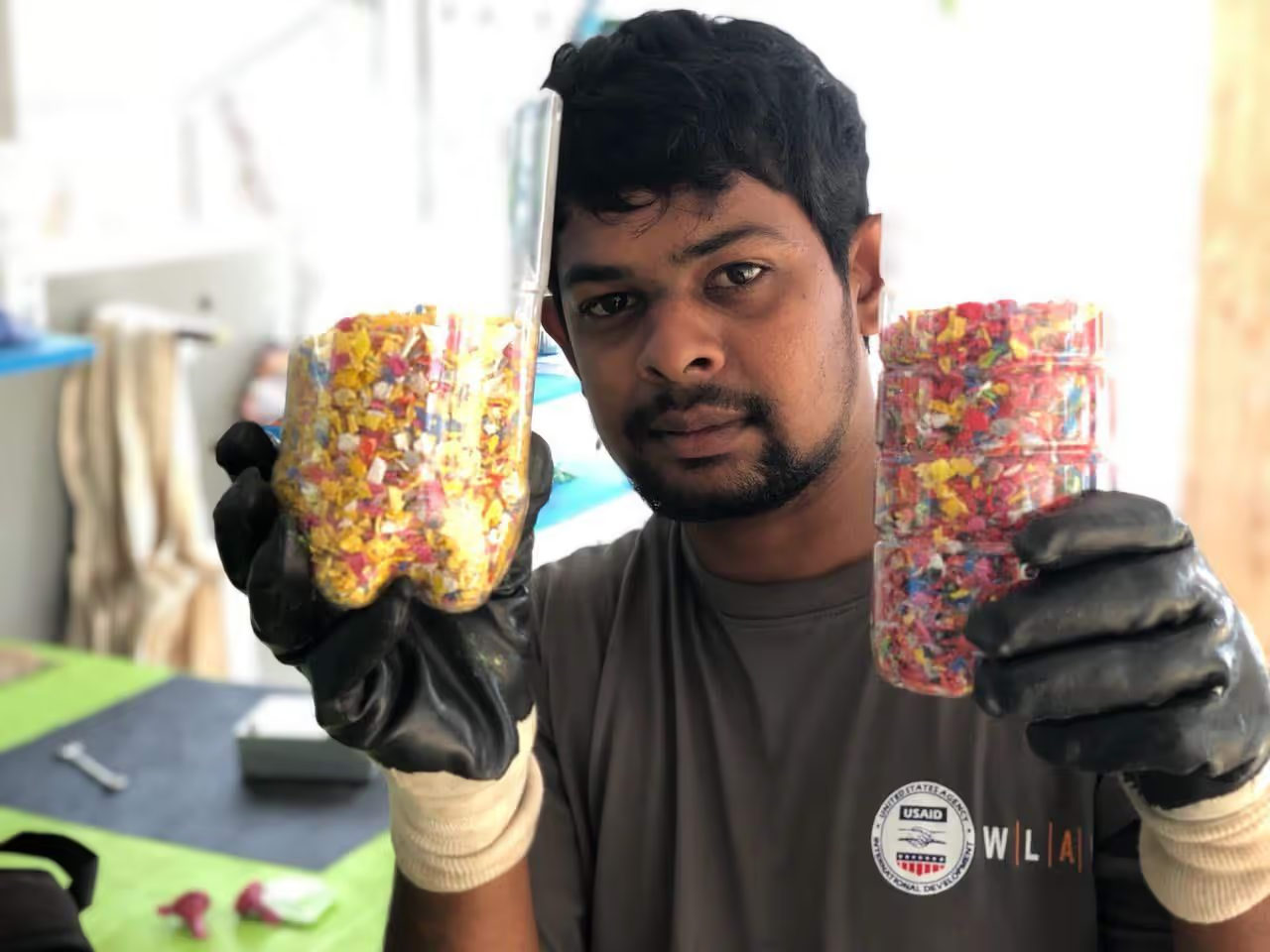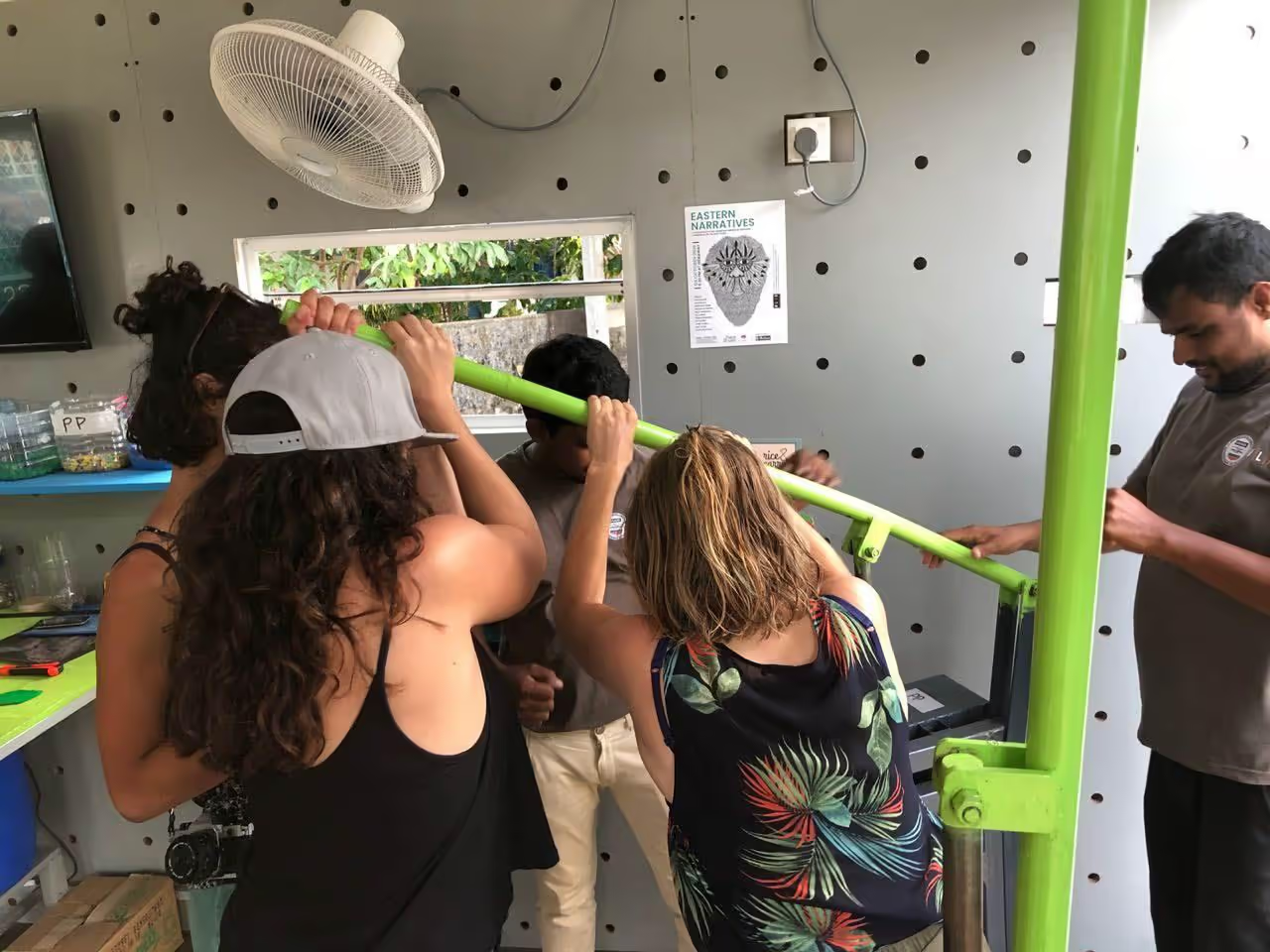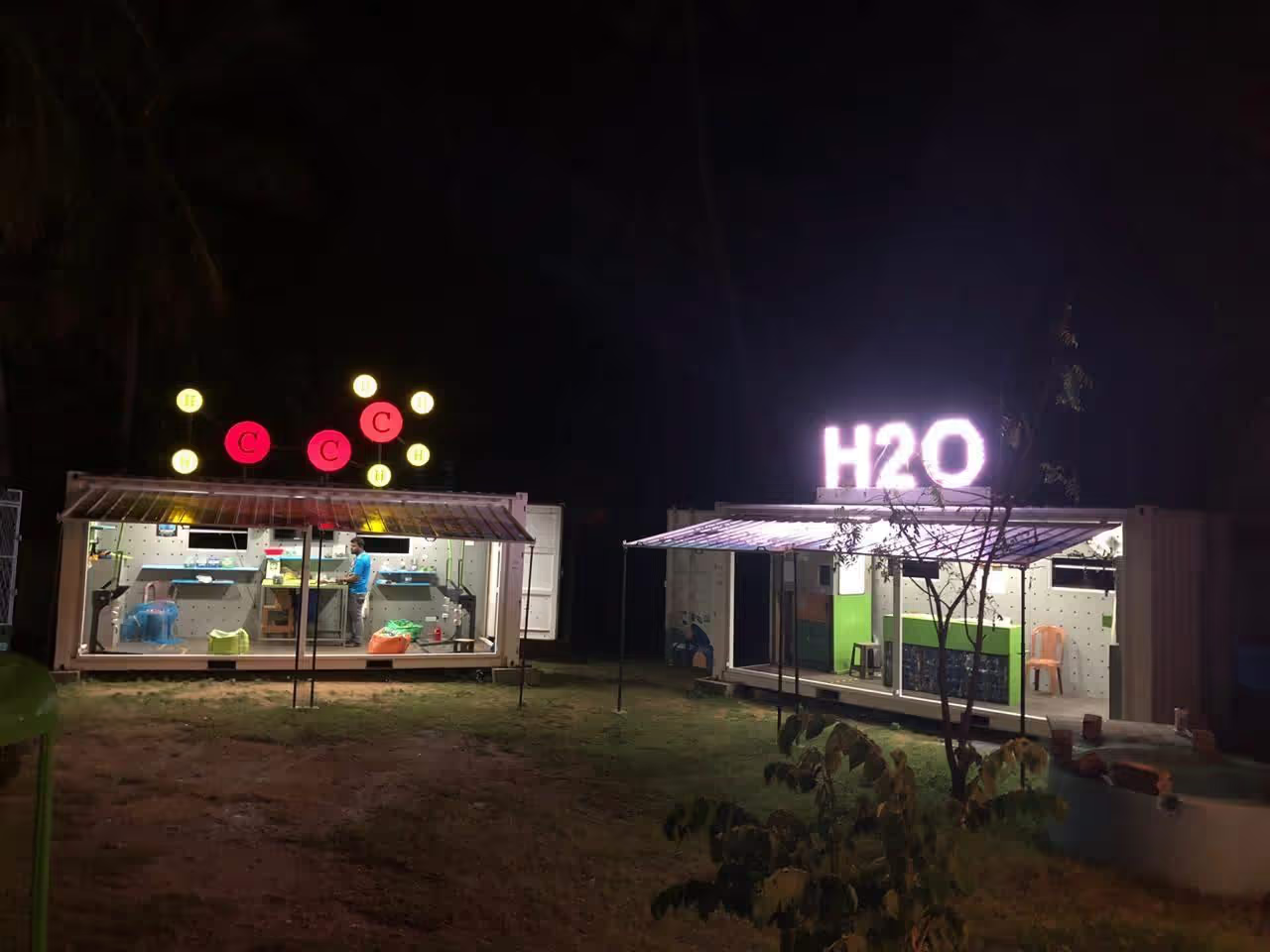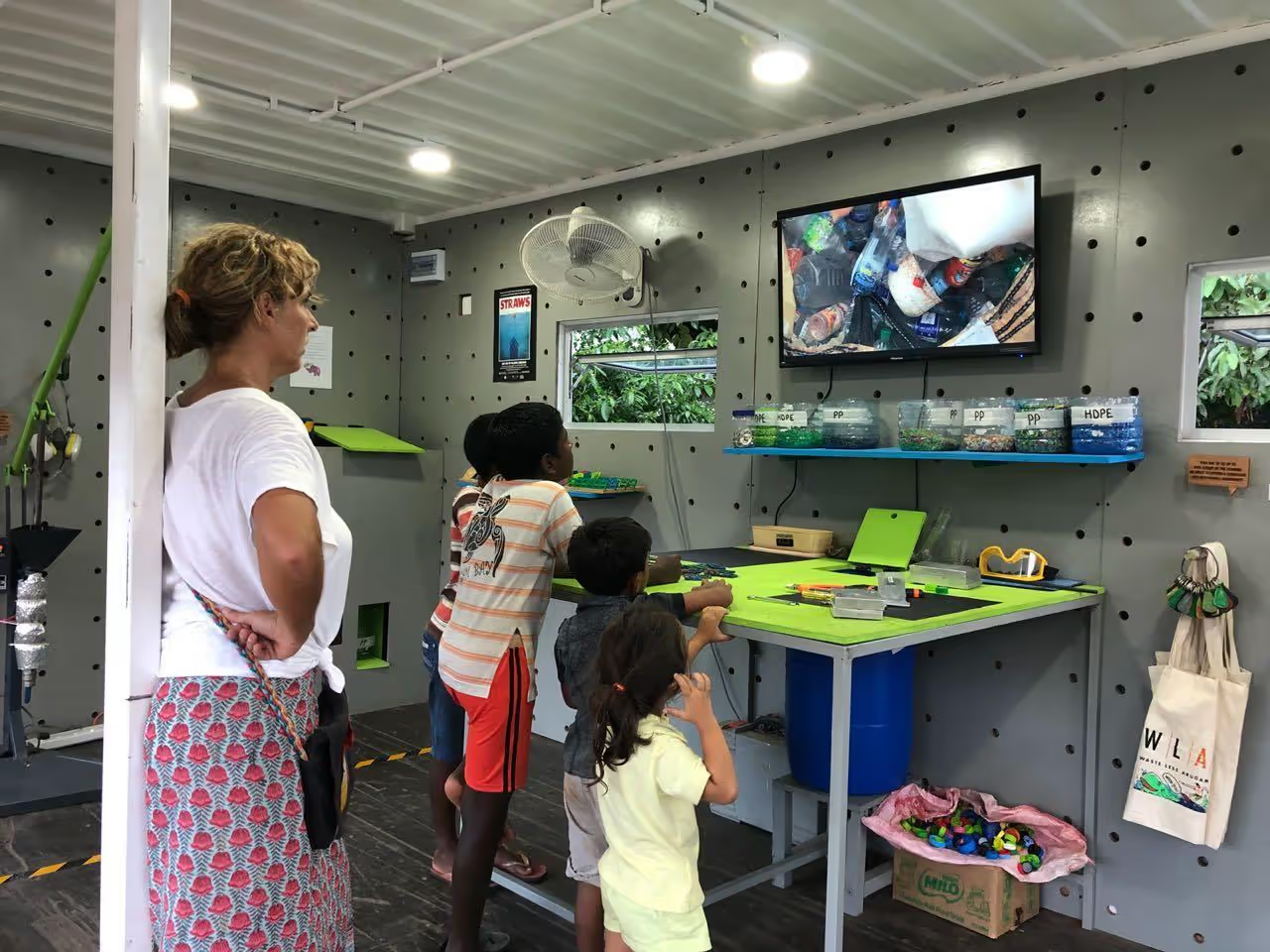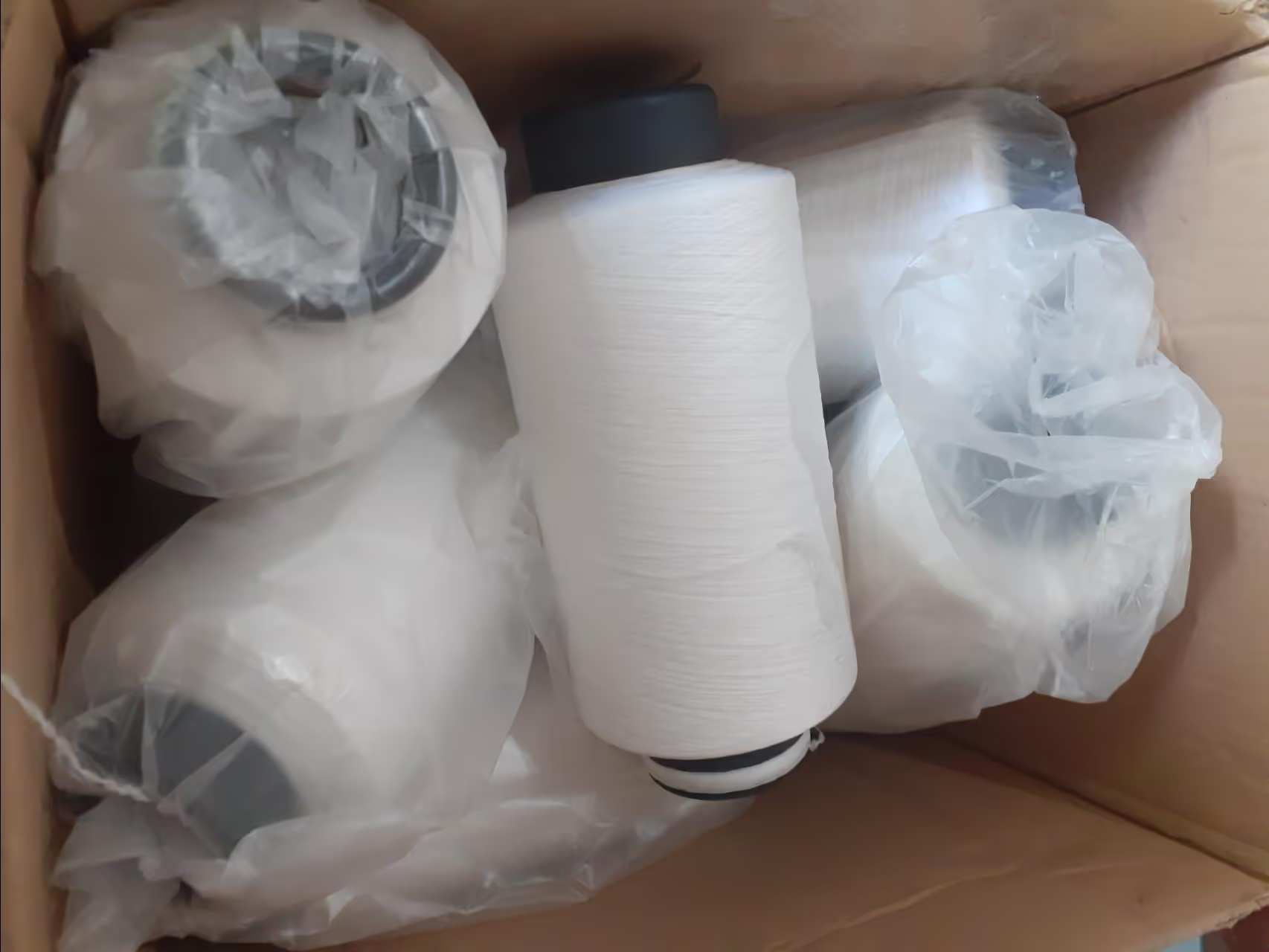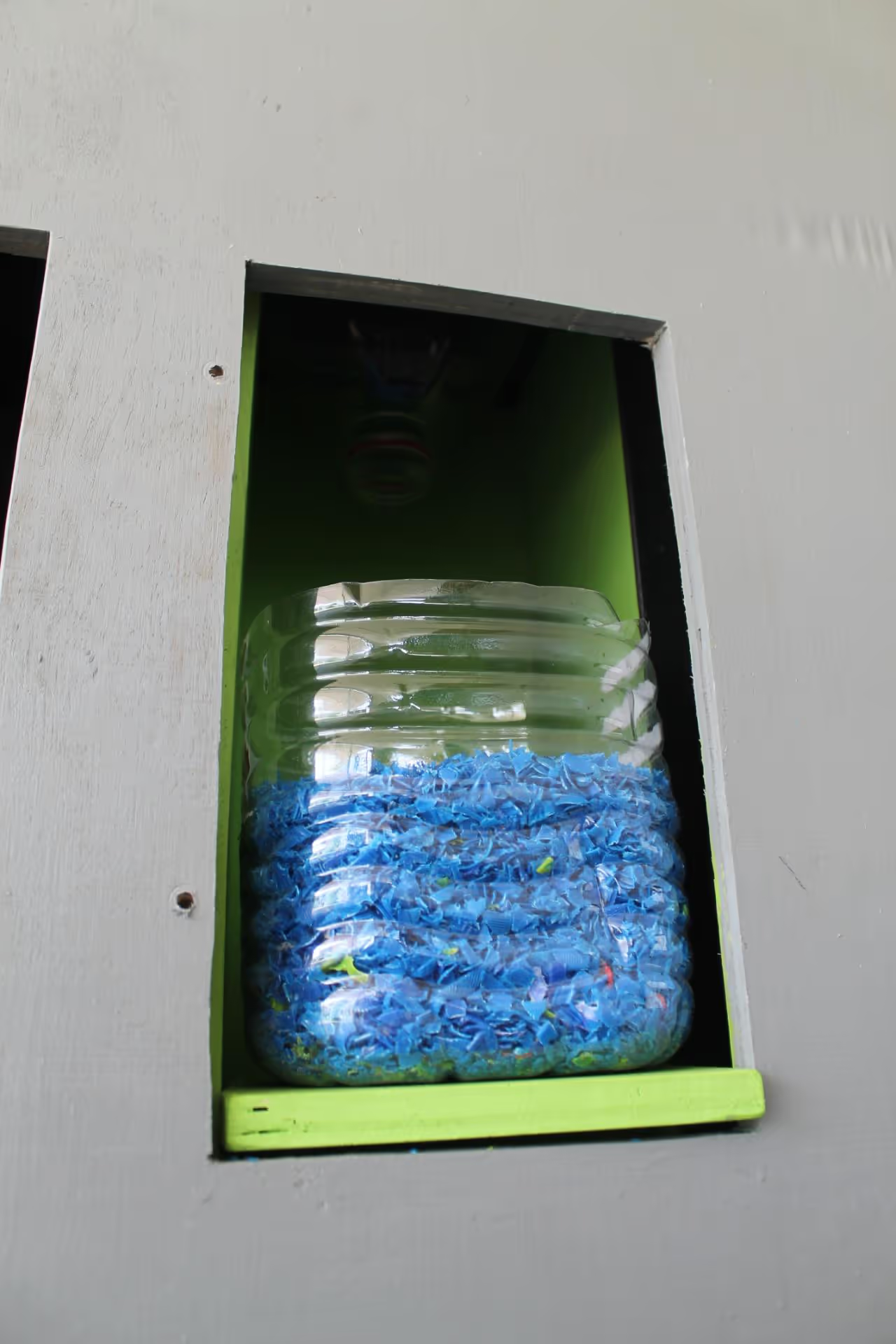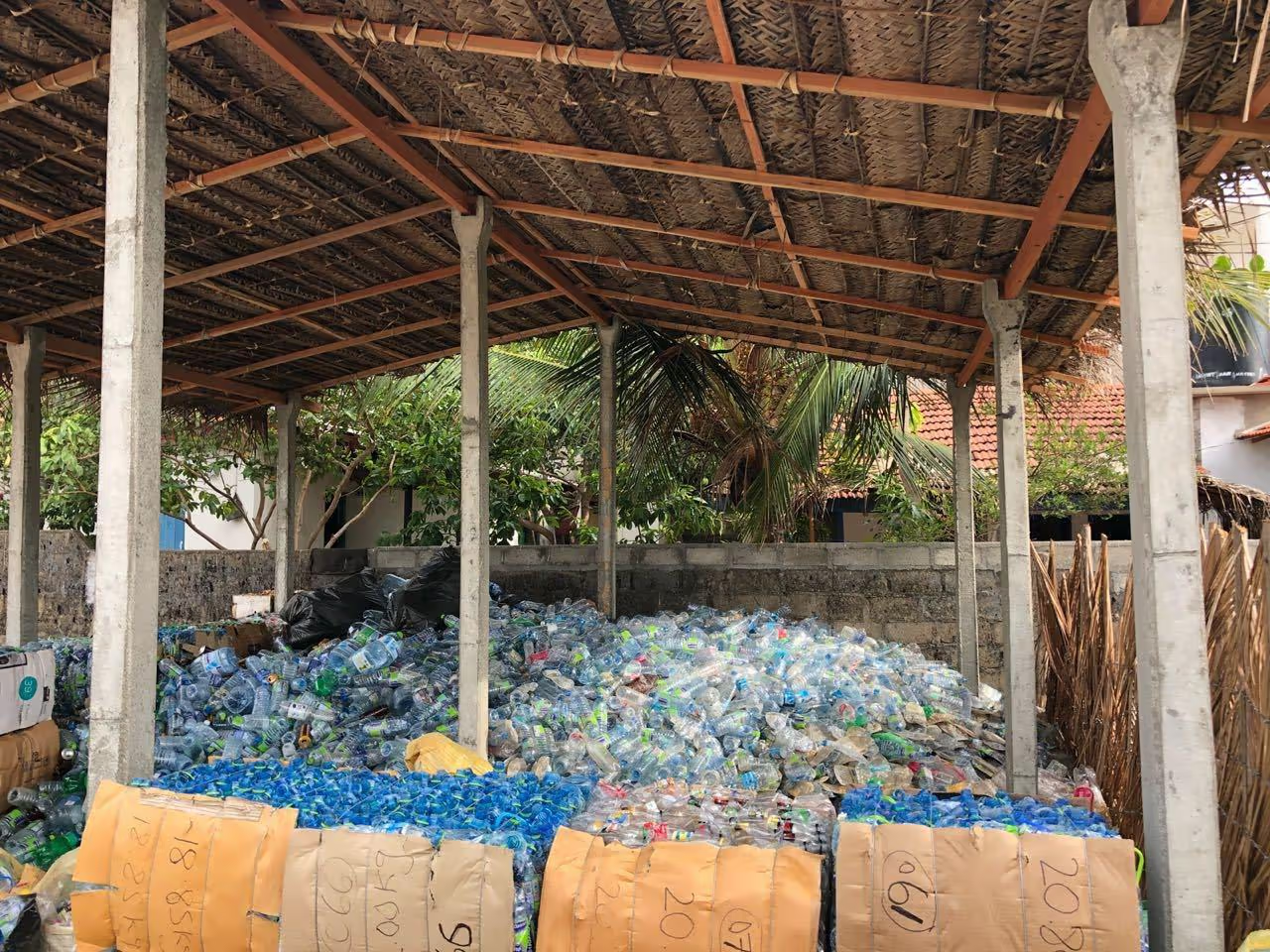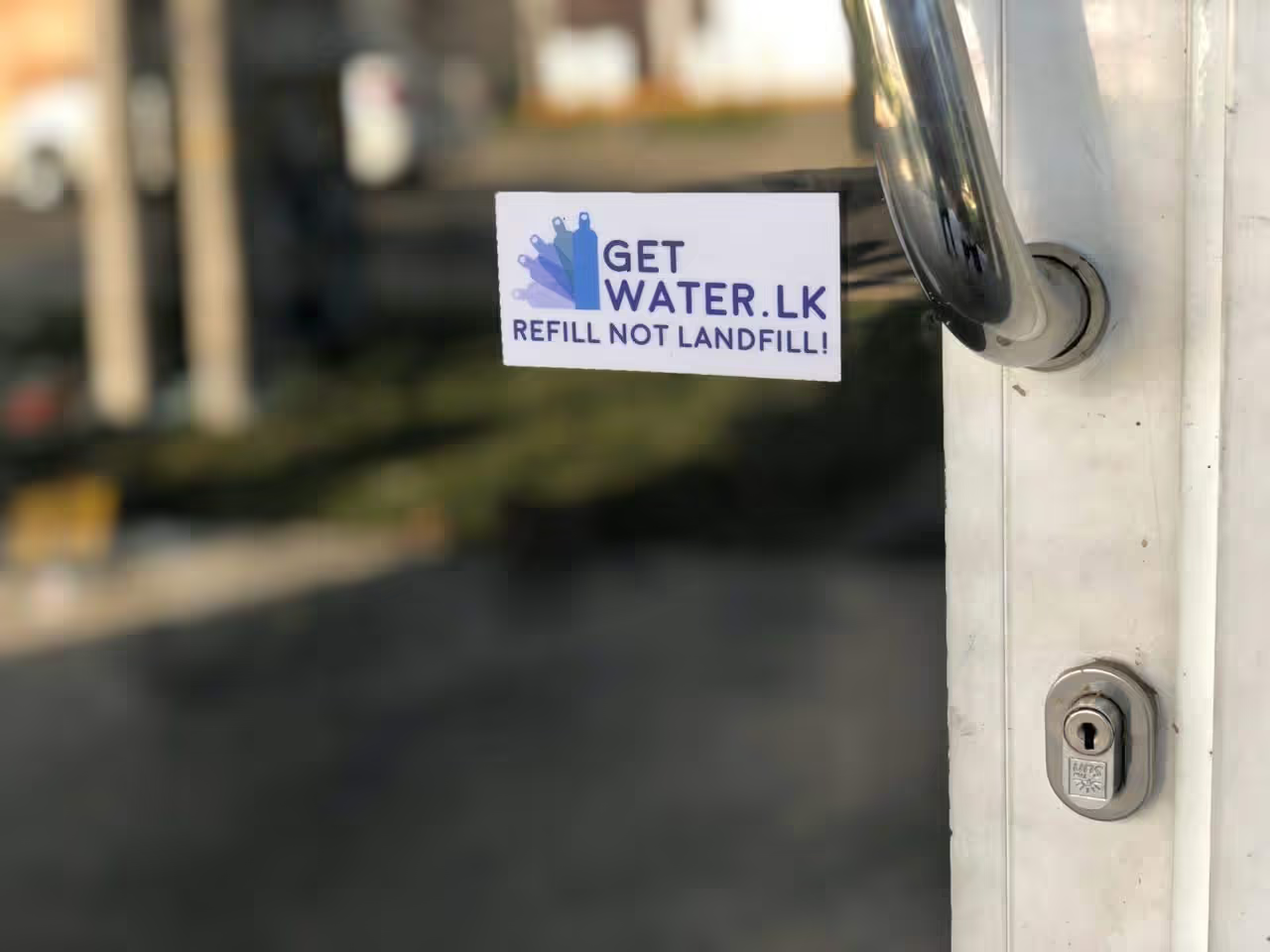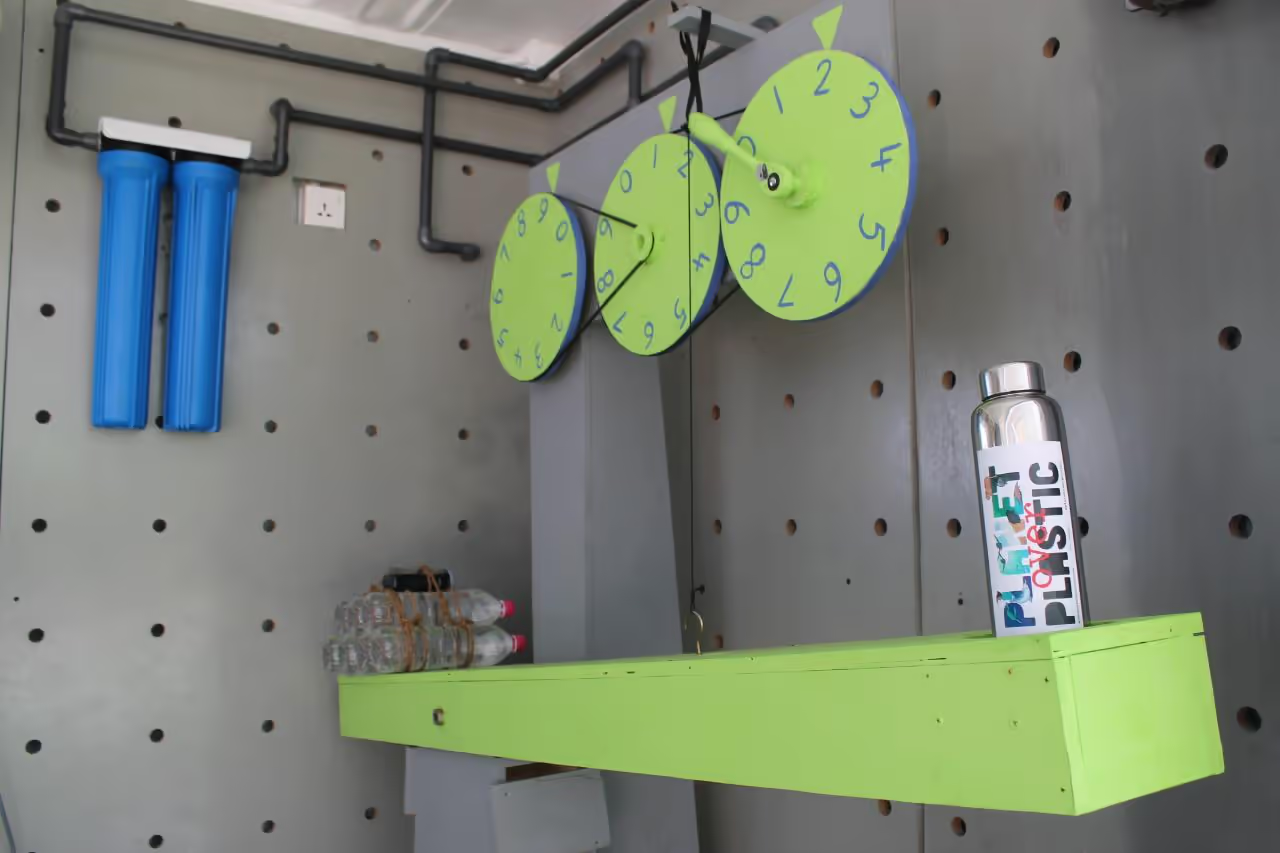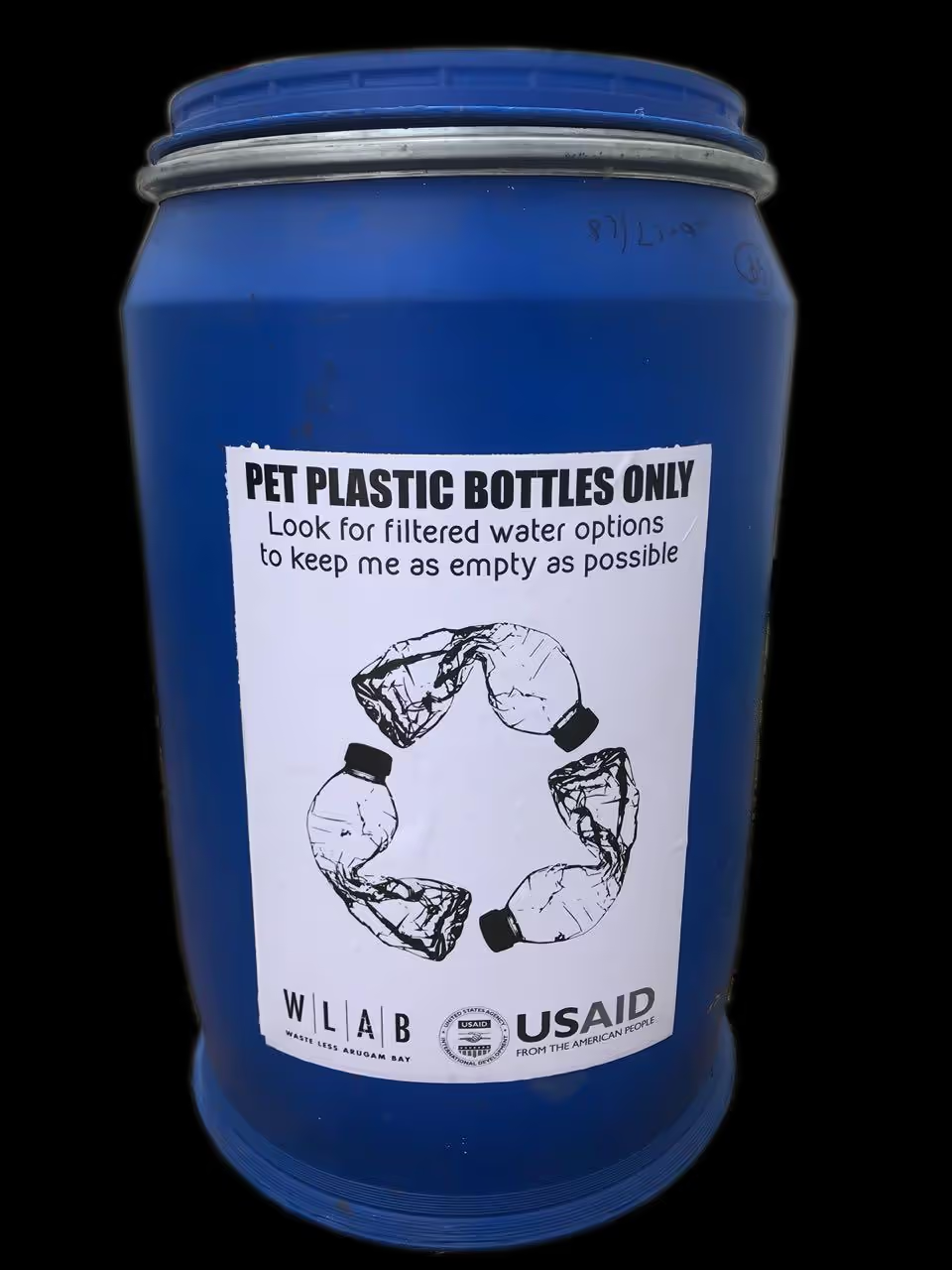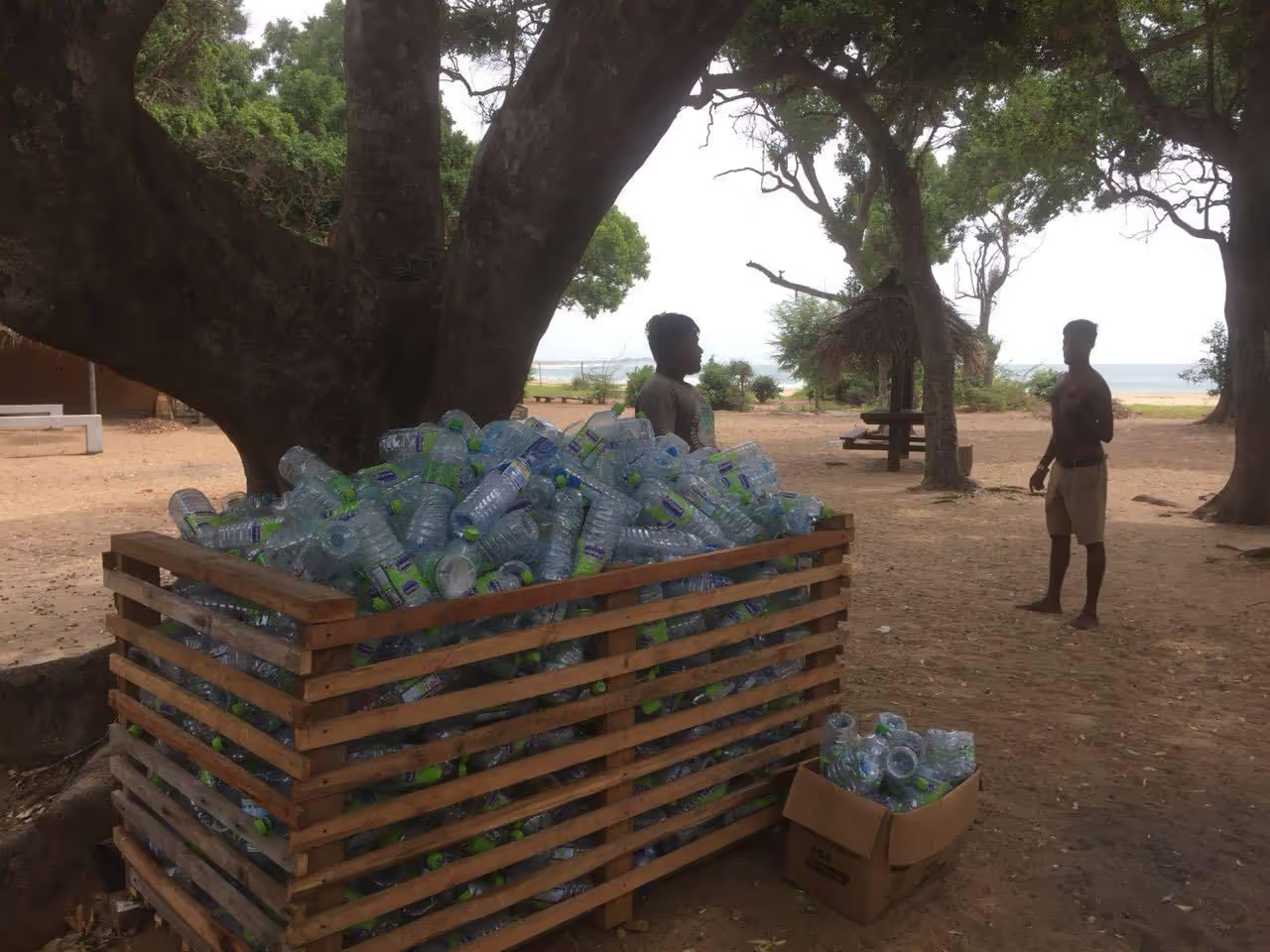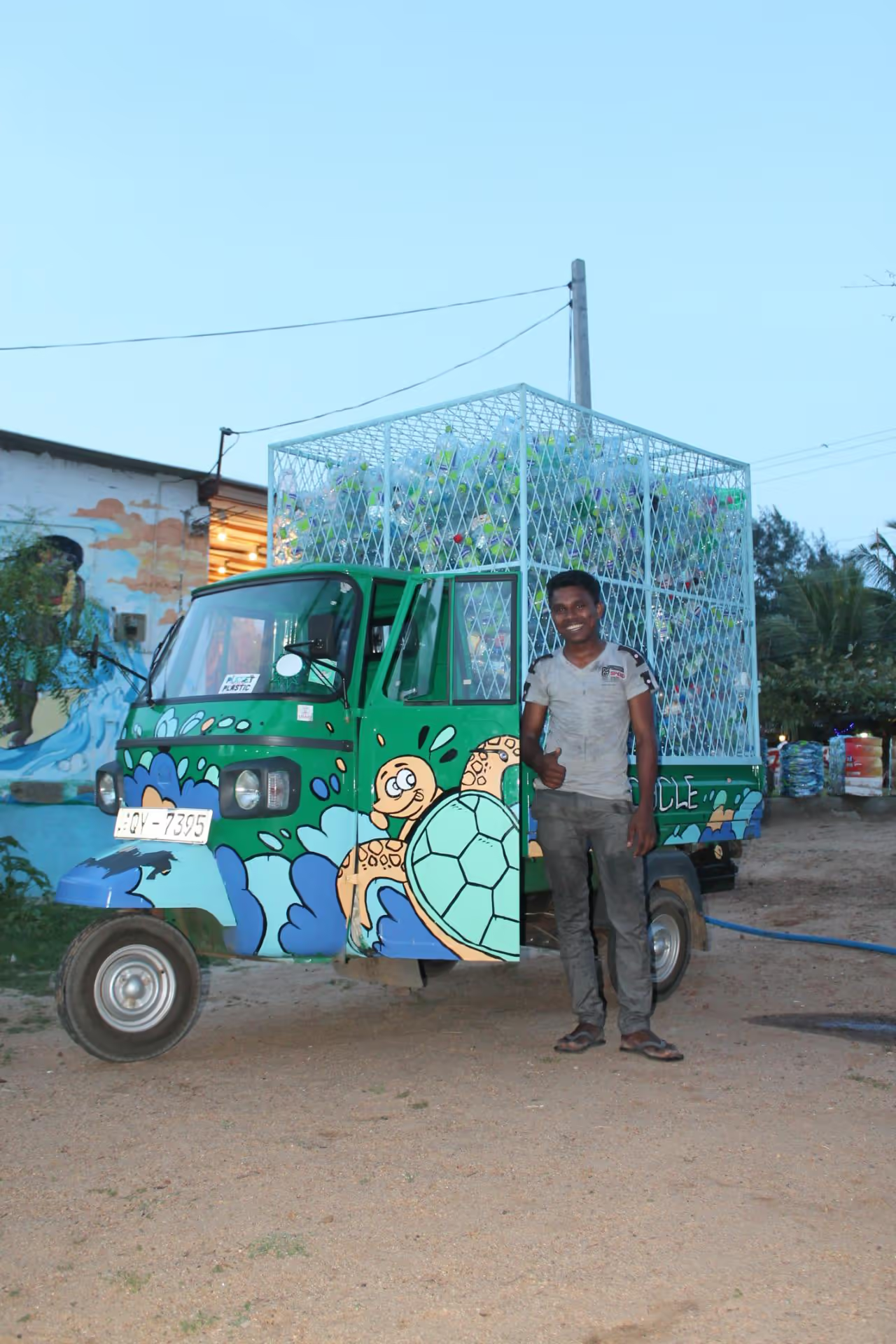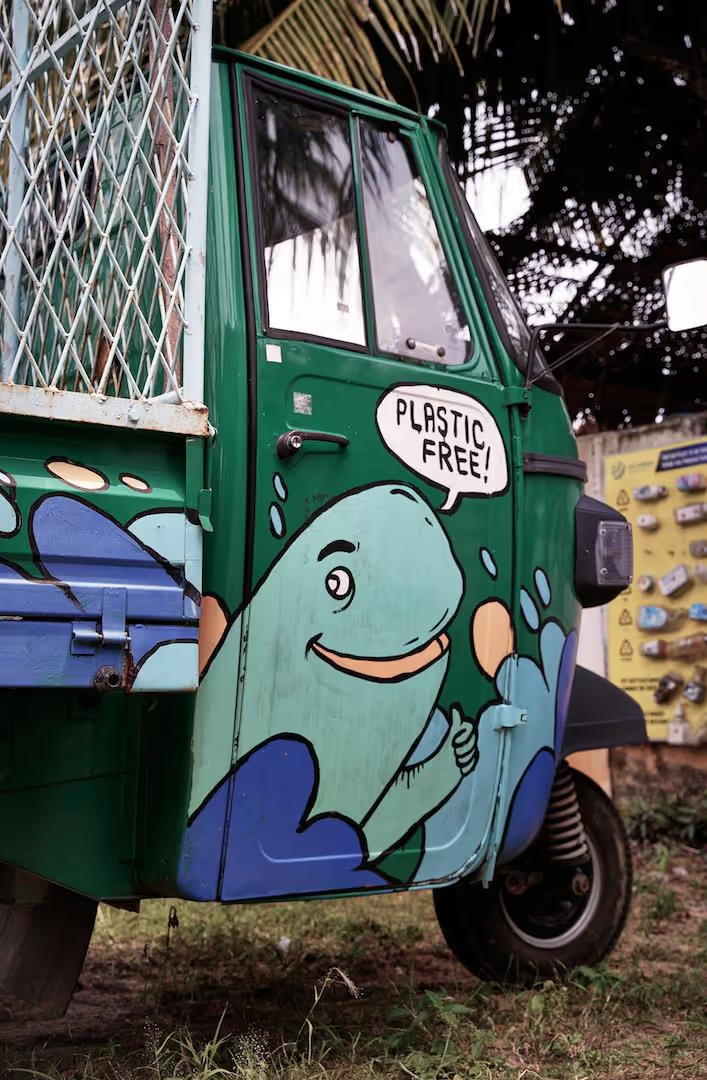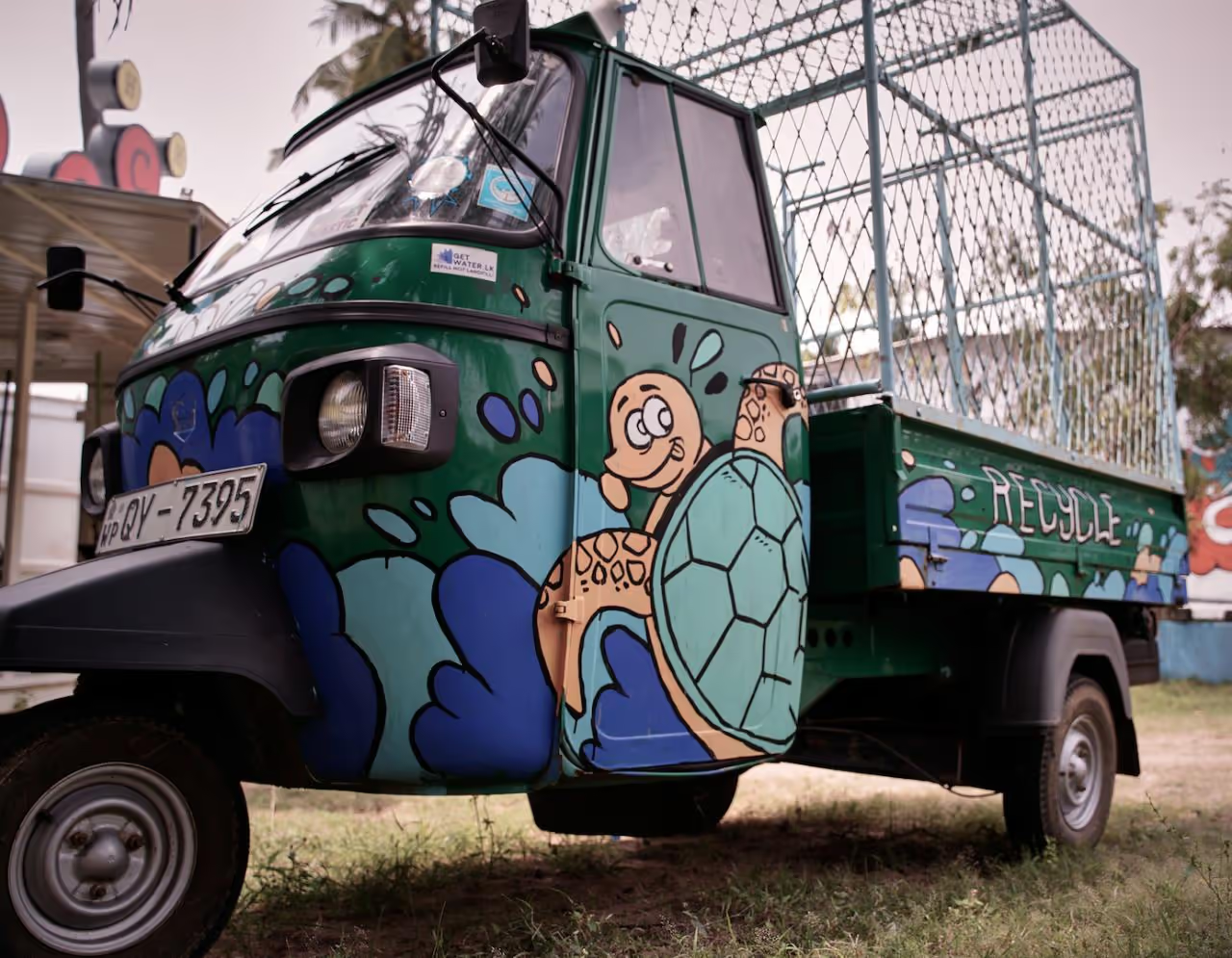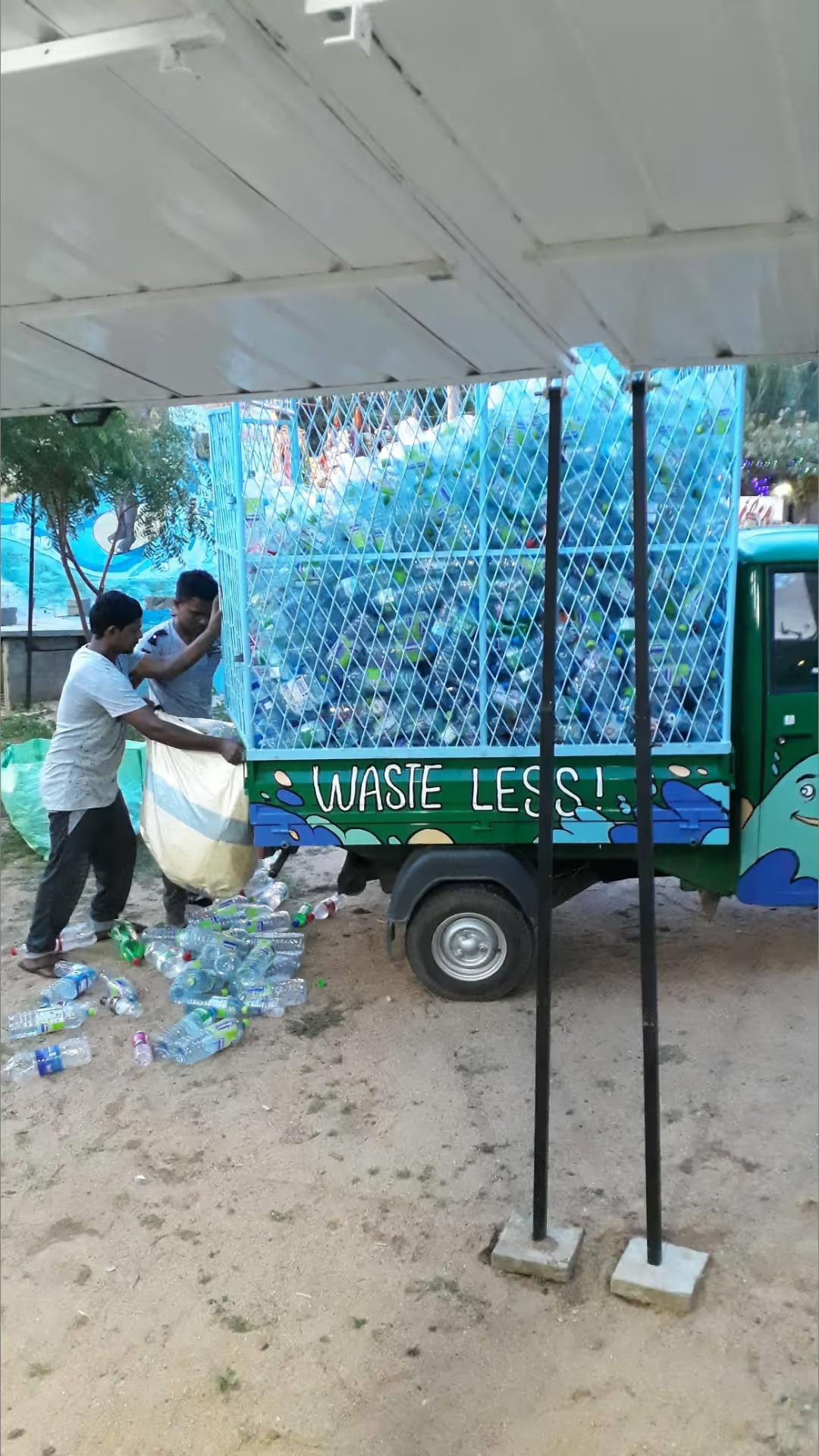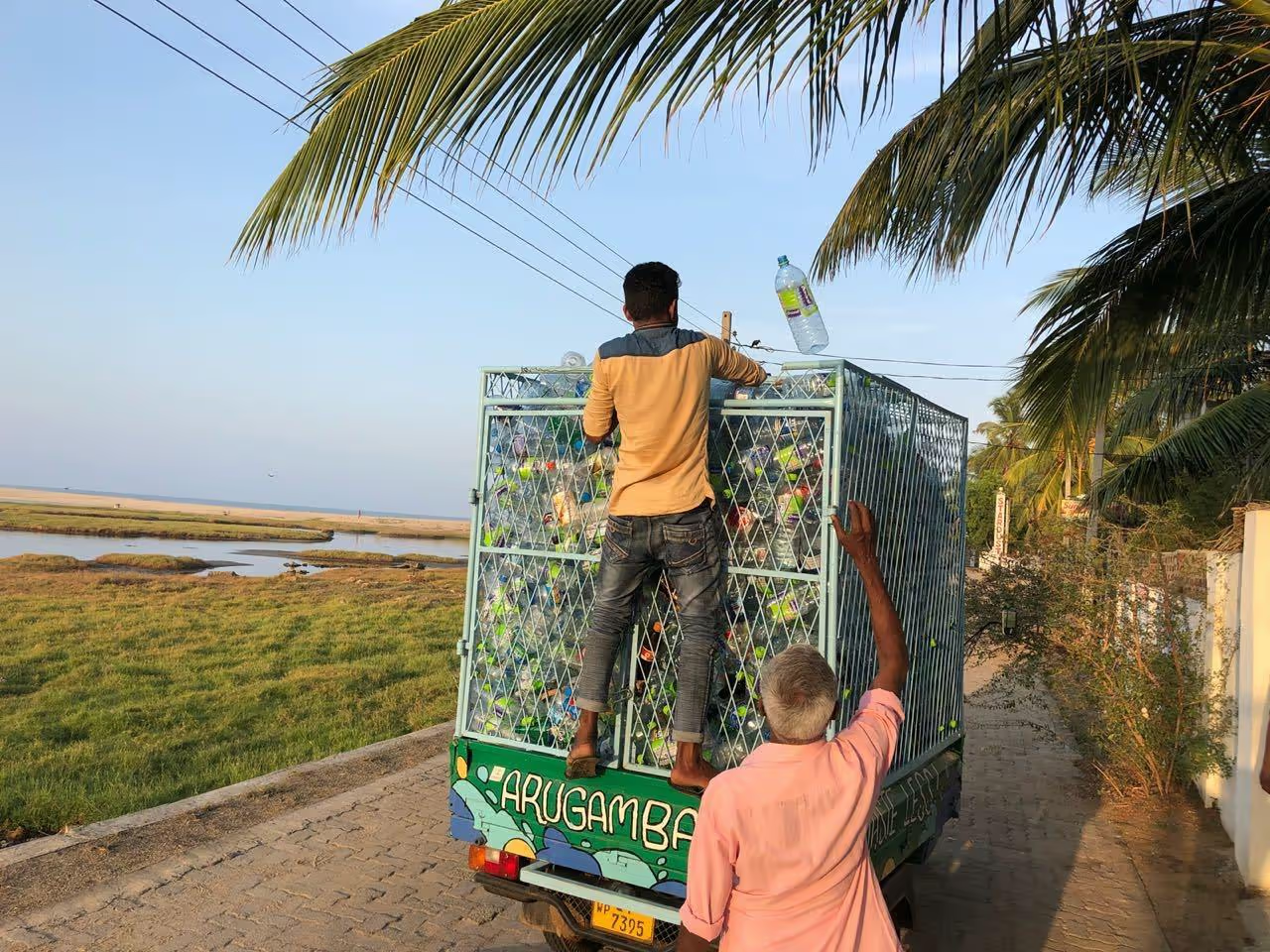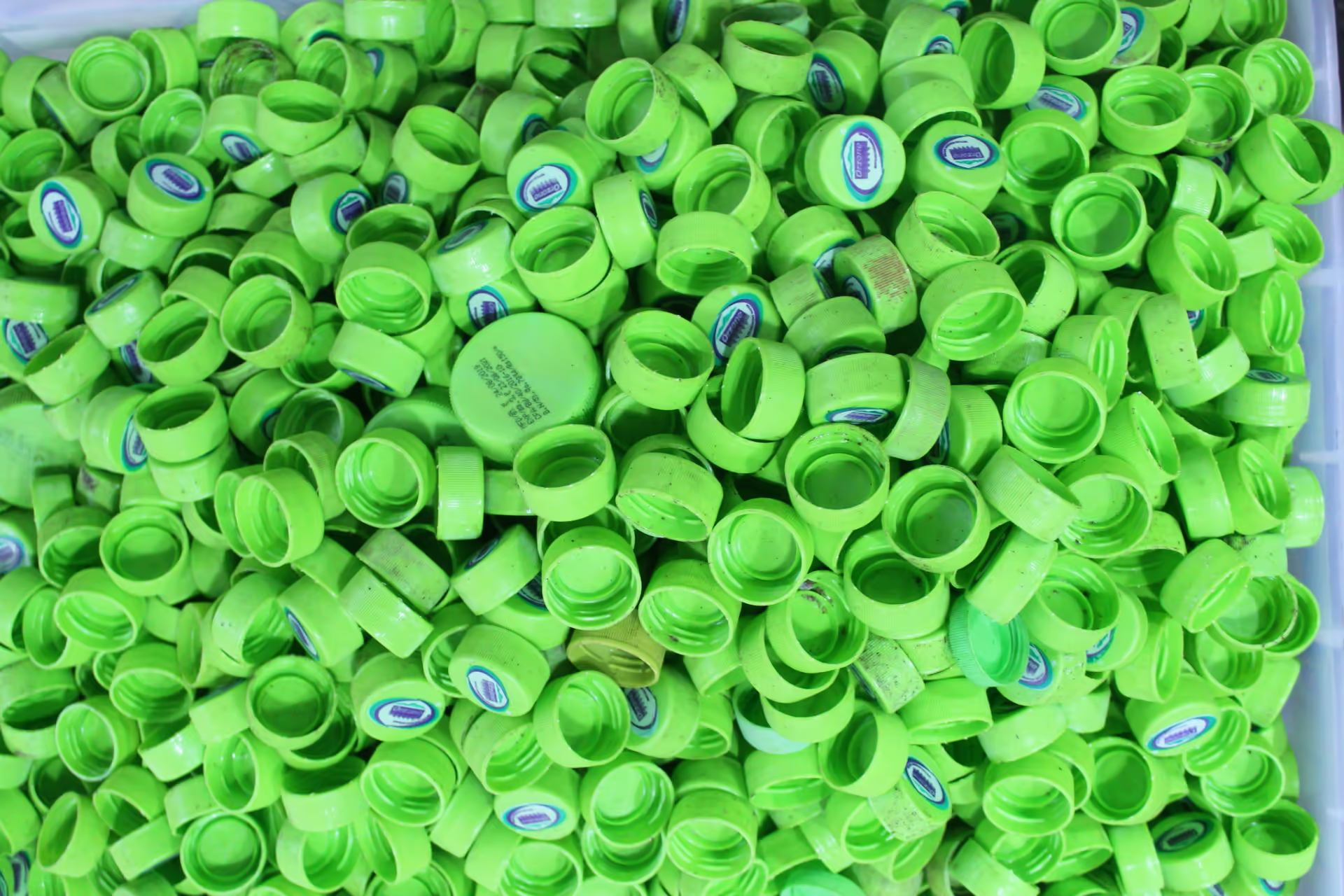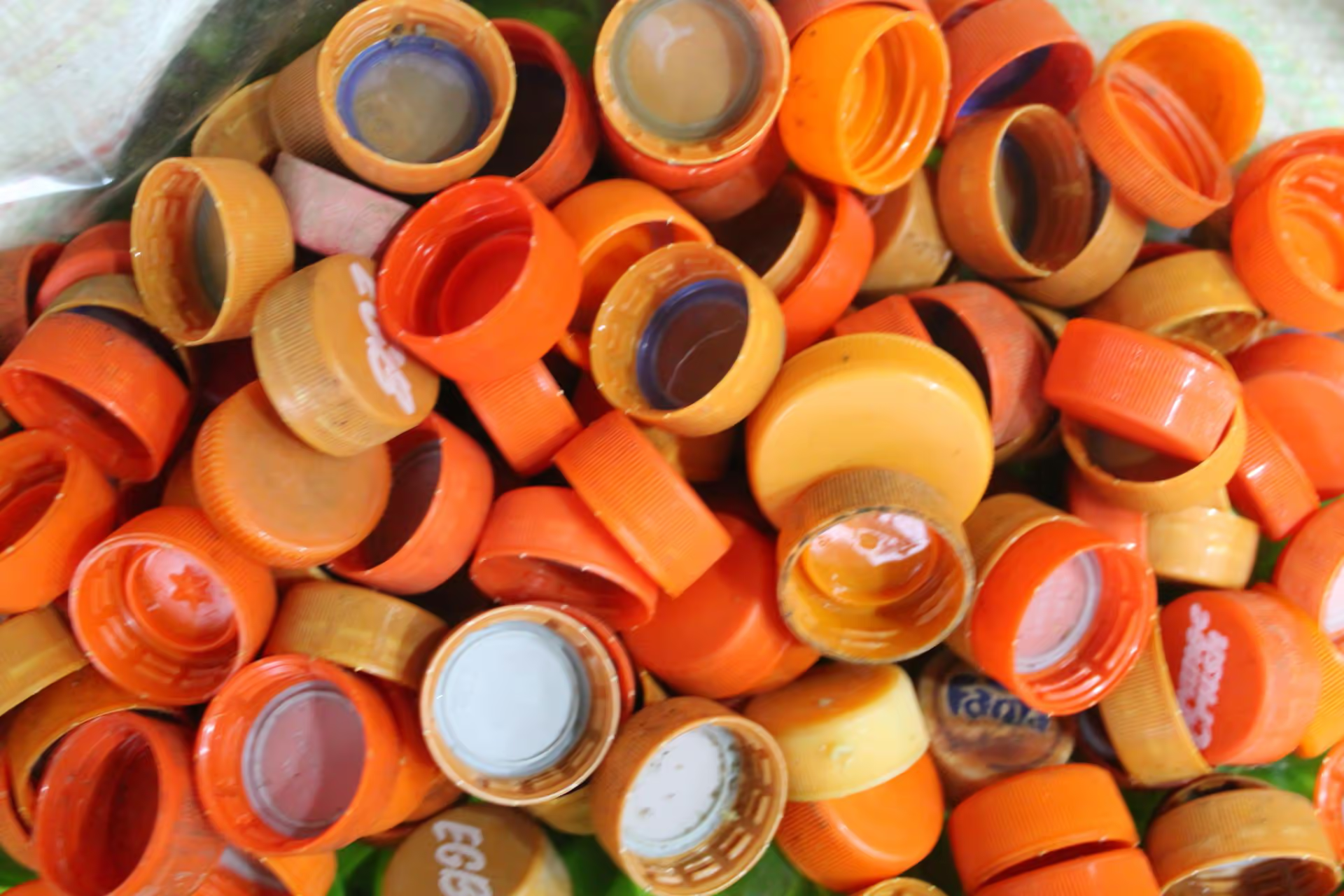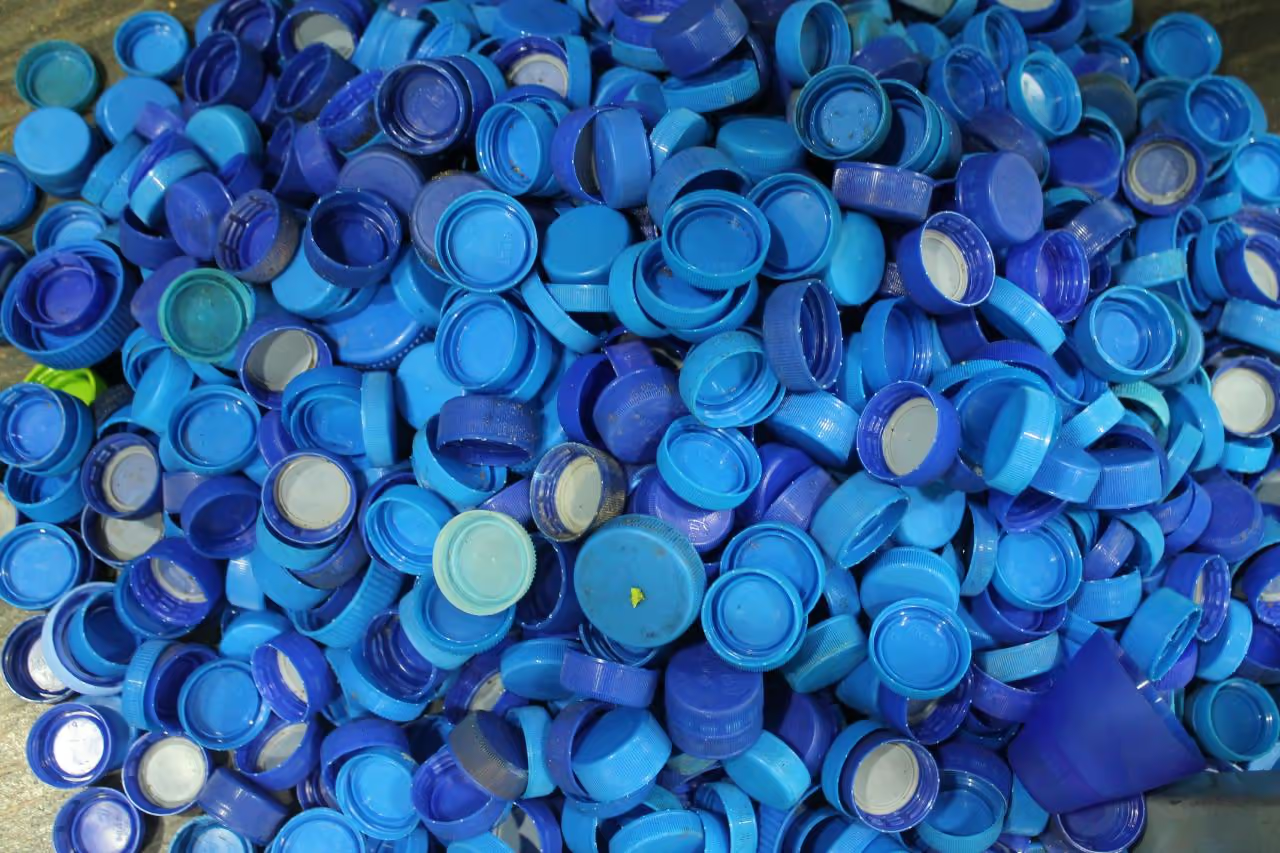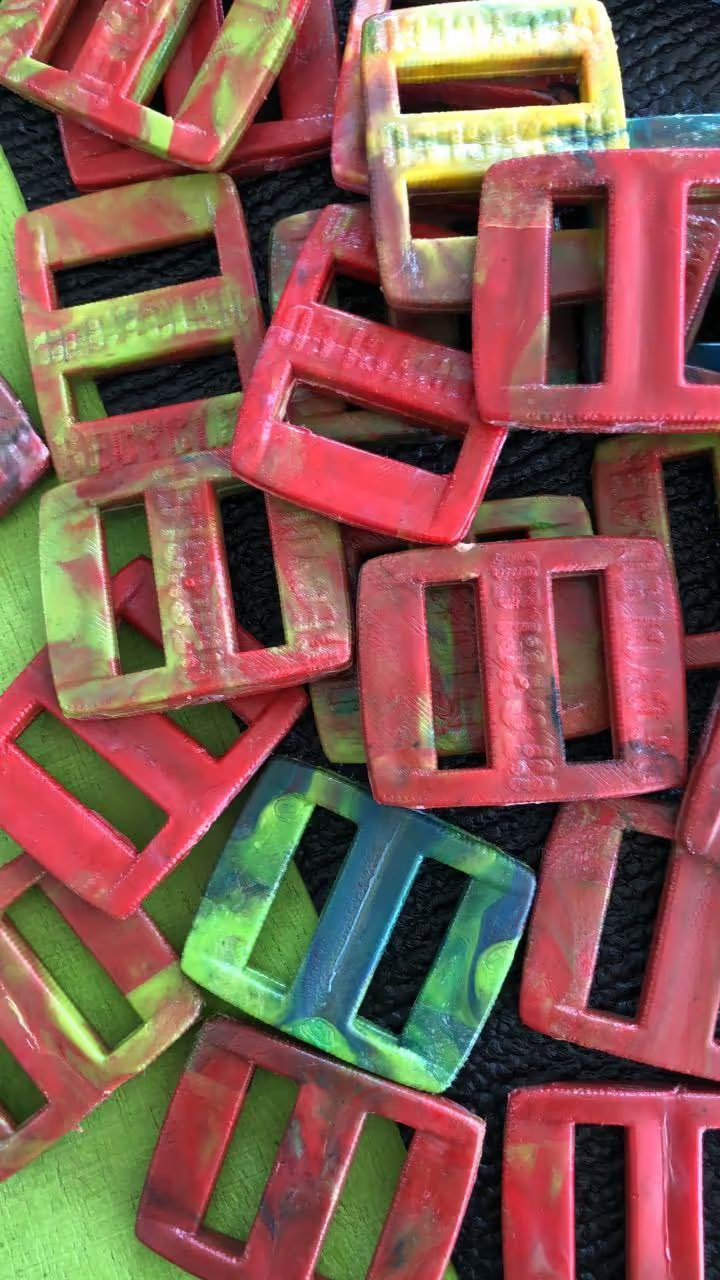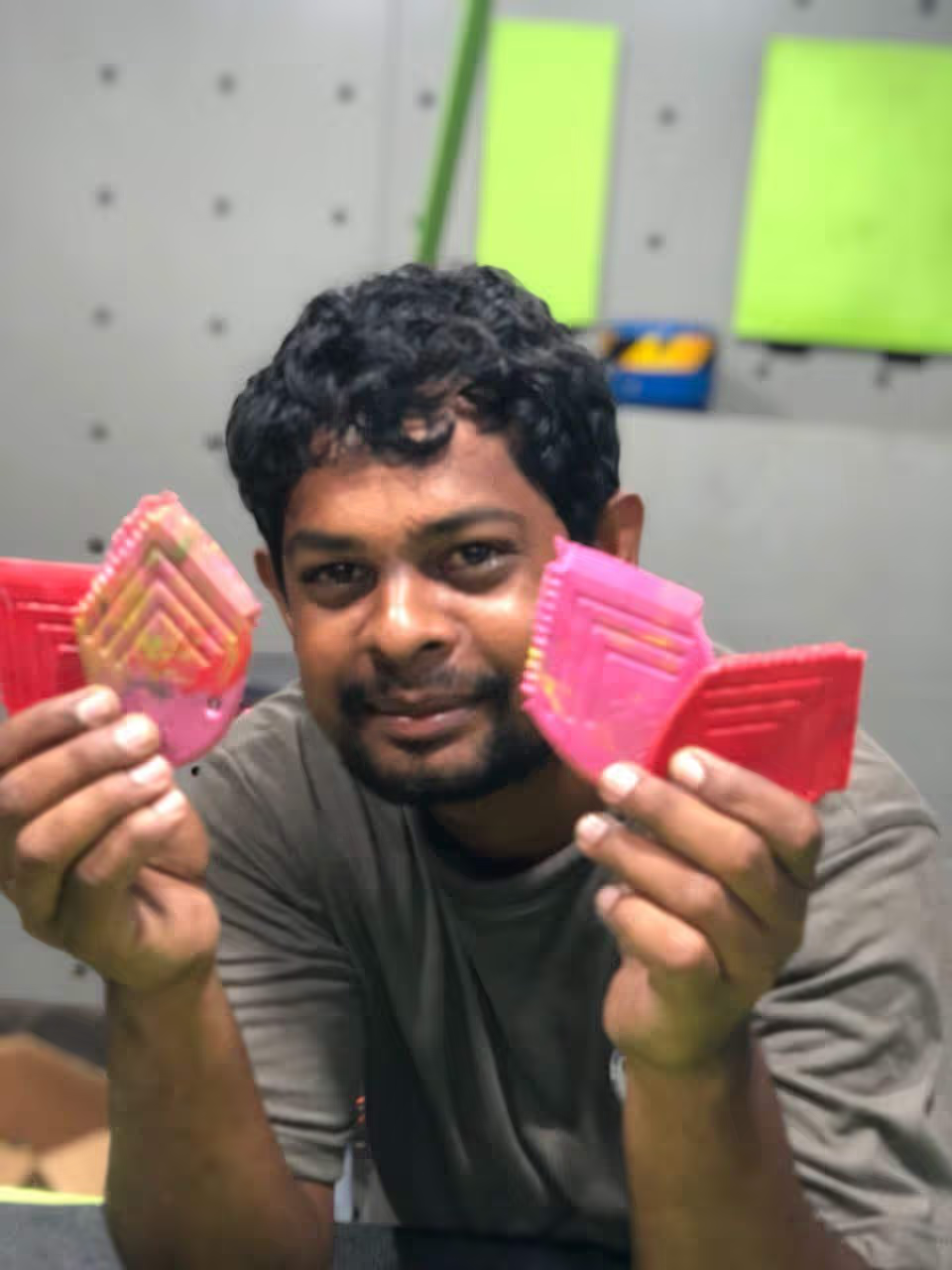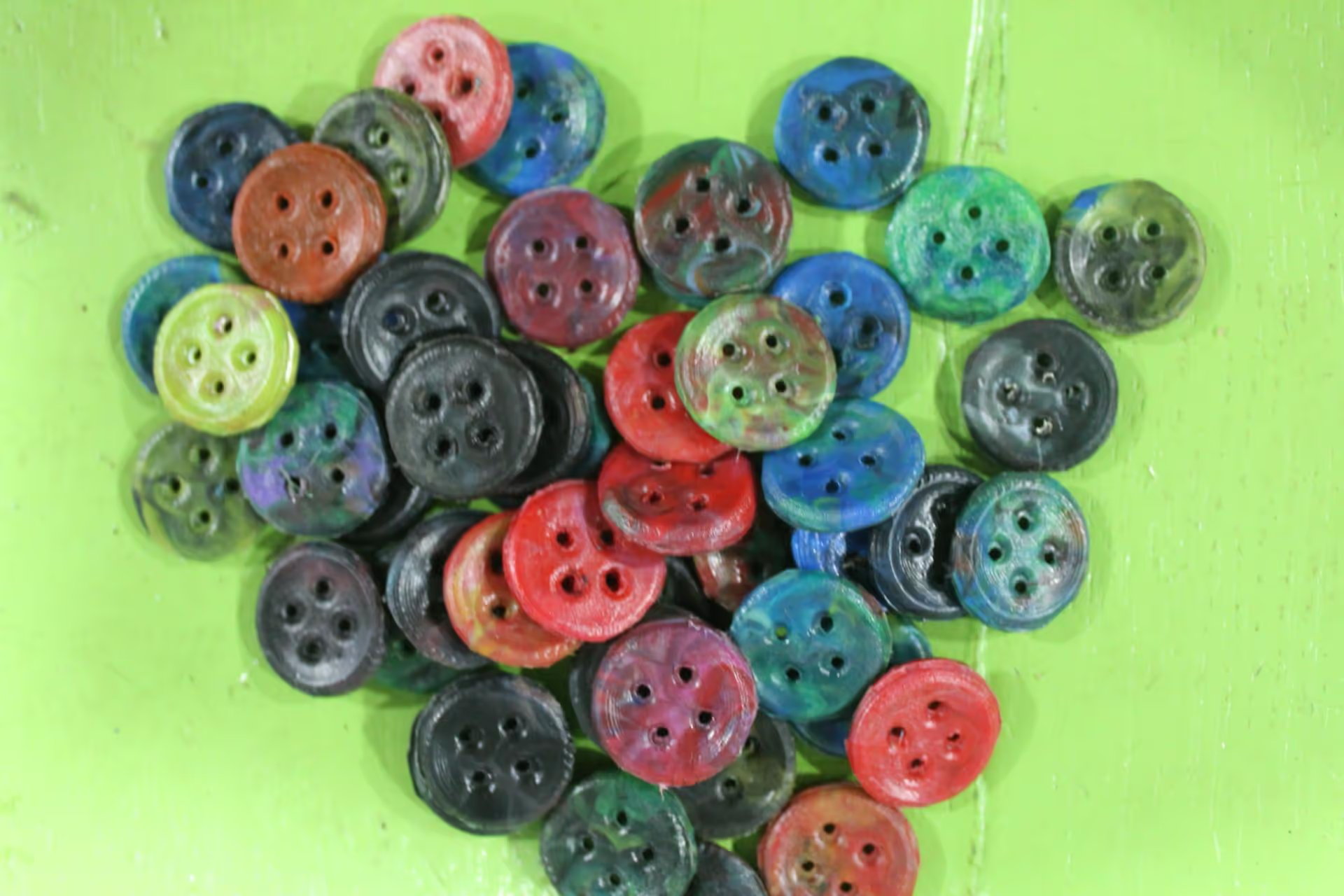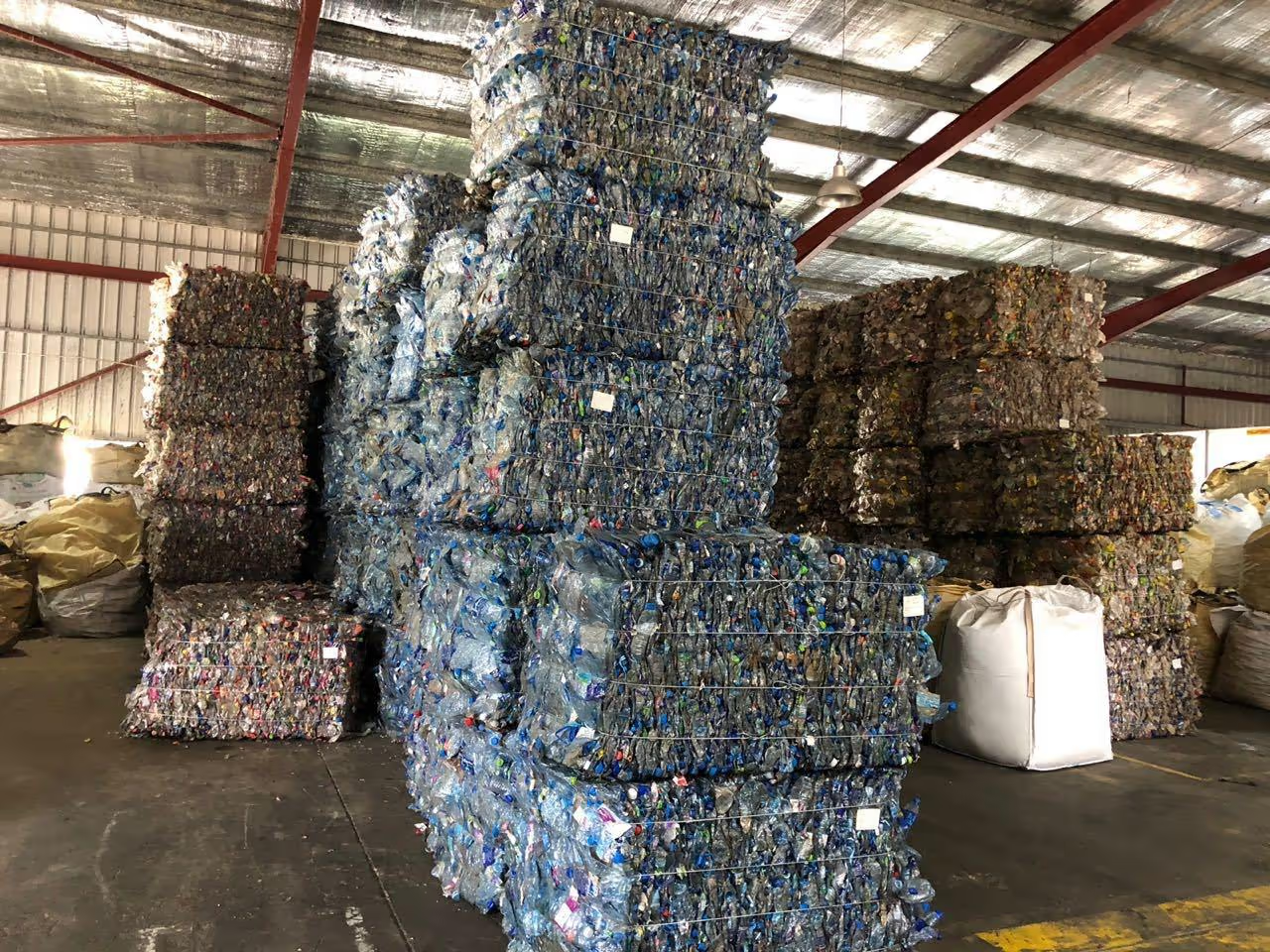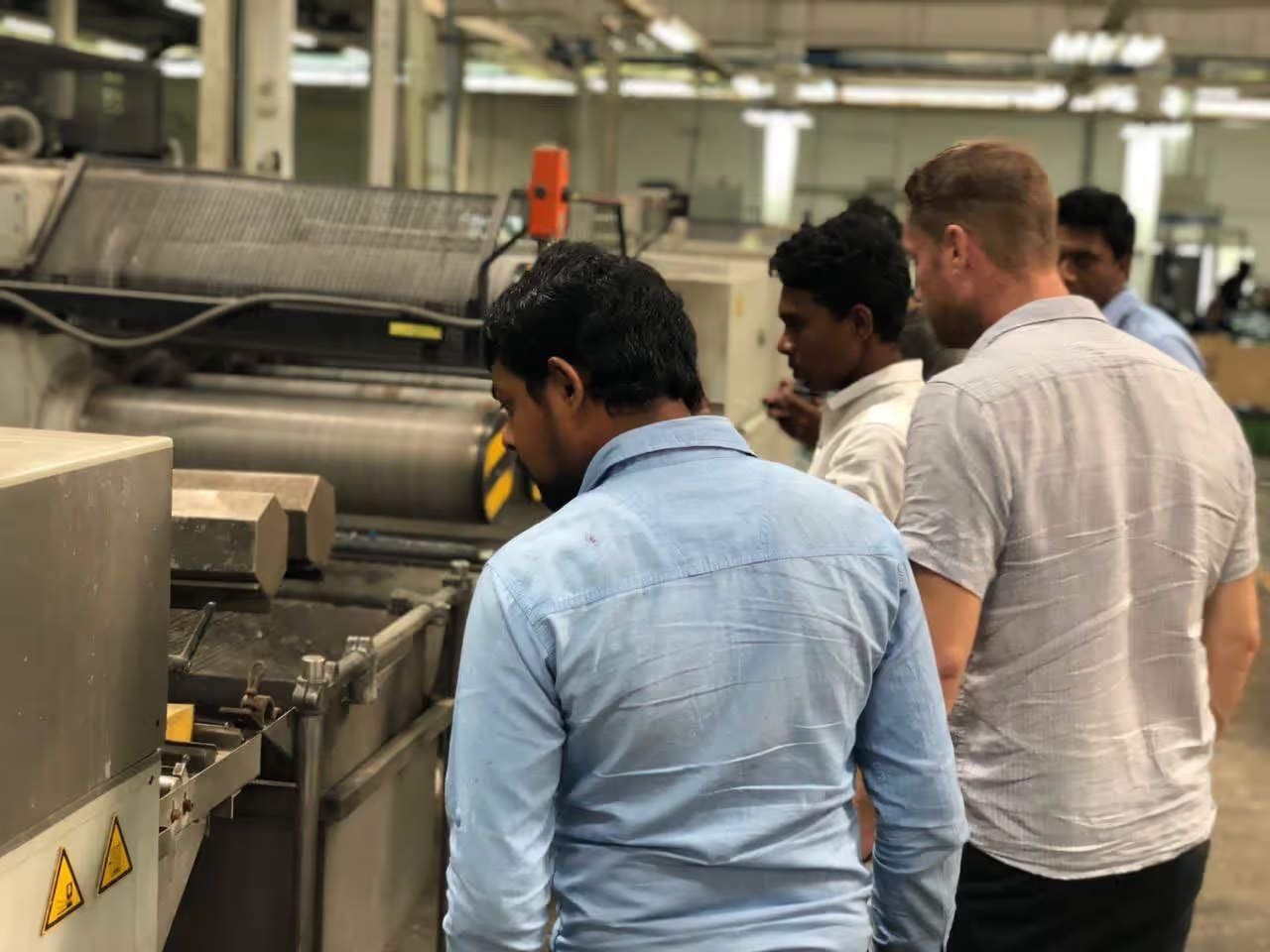This guide explains how we addressed waste collection in a growing tourist area. As tourism increases waste production beyond local capacity, it is essential to establish improved collection systems.
Table of Contents
-
Located in Arugam Bay, a small town of 150 residents on Sri Lanka's east coast, the local economy relies heavily on tourism and seasonal fishing. However, effective waste management is lacking. During the tourist season, municipal waste management capacity is overwhelmed by tourism-related businesses, resulting in increased plastic waste burning by locals. Additionally, businesses incinerate large piles of plastic bottles due to high tourist consumption.
-
WLAB, established in 2018 with USAID funding, focuses on resource management, plastic collection, and education programs in schools, transforming plastic waste into products. We employ three full-time staff members.
-
Our strategy involves collecting clean PET bottles from local sources. We sell these bottles to industry partners, retaining PE caps for our production. Occasionally, we participate in beach cleanup activities.
-
Our facility in central Arugam Bay comprises two 20 ft (6.1 m) shipping containers with convenient access to the main road, frequented by tourists. This location enhances our visibility for educational purposes.
-
We focused on collecting plastic from the tourism industry due to their substantial volume of PET bottles, which are in high demand by the recycling industry in Sri Lanka for conversion into polyester yarn. These bottles are relatively easy to handle as they are clean, and the caps are suitable for the machines. This effort also addresses the issue of PET bottles contributing to landfill waste.
-
Our public water refill system allows free access for everyone. Ultimately, we aim to reduce the number of bottles needing collection. A tourist destination free of plastic bottles is preferable to one with a substantial PET bottle collection.
- 7Bins
We have placed over 60 bins around town at locations such as hotels, restaurants, resorts, mosques, and shops. Although initially free, we now consider implementing a deposit system. Each bin is attractively painted and includes a prominent sticker indicating the type of plastic collected, along with a message encouraging exploration of alternatives.
-
Markdown
As awareness of plastic waste grows, it is important for businesses to demonstrate action. Therefore, convincing business owners to adopt our bins is straightforward. A reliable staff member should communicate with businesses to establish trust in our efforts.
-
To collect and transport resources, we modified a traditional tuk tuk with distinctive illustrations by a local artist for a unique appearance.
-
We regularly use our tuk tuk to gather plastic from various locations. During peak tourist season, collections are made daily due to increased volumes.
- 11Volumes
Monthly, we collect about 1 ton (approximately 2,205 pounds), a small portion of the available material. Gathering more from the local community is challenging despite the potential to collect over 4 tons (about 8,818 pounds) of PET monthly. The primary issue is that collection costs are high and PET prices remain low.
- 12Sorting
Upon arrival at the workspace, bottles are sorted to separate caps from PET bottles, placing each in designated containers. Staff typically perform this task, occasionally assisted by tourists.
- 13Baling
To optimize transport efficiency, we bale our PET bottles, allowing for more effective shipping. Each bale comprises 700 to 800 bottles and weighs approximately 23 kg (50.7 lbs).
- 14Products
Collected PE bottle caps are transformed into products such as key rings, surf wax combs, buttons, and buckles. These products are used internally or sold to individuals and wholesalers.
-
We offer complimentary bottle collection from hotels and resorts, including the provision of collection bins. The collected PET is then sold to the industry at 55 Sri Lankan Rupees per kilogram (approximately 0.26 euros or 0.30 USD). Our products made from bottle caps generate significant profit. Adding value to materials improves margins, while bulk sales of raw materials require large volumes due to low profit margins.
-
Sri Lanka has advanced facilities capable of converting PET into polyester yarn. However, a single company dominates the market, making it difficult to negotiate competitive prices. This situation is similar for glass, with just one buyer controlling pricing.
-
How to Start a Collection Operation
Operating efficiently for two years, we recommend the following essentials for initiating a collection operation:
- A dedicated team
- Adequate space
- A well-chosen target area
For effective collection, the objective is to gather maximum materials with minimal travel. Tourist areas are ideal due to the high concentration of waste generated by many people in a confined space.
We hope this guidance assists you in starting your operation. Enjoy the accompanying video illustrating our process.
The growing tourist area in Pottuvil, Sri Lanka, faces waste management challenges due to seasonal tourism overwhelming local capacity. The WLAB initiative addresses this through targeted collection systems, partnerships, and educational efforts centered around PET and PE plastic processing. Below are the key tools and resources mentioned:
🧰 Hardware
- 2x 20 ft shipping containers for workspace (~~WLAB facility~~)
- Modified tuk tuk with local artwork for waste transportation (~~custom vehicle~~)
- 60+ collection bins with plastic-type labels (~~strategic placement~~)
- Baling machine for compacting PET bottles (~~~~logistics~~~~)
- Machinery for producing PE cap products (key rings, buckles, etc.) (~~value addition~~)
📊 Software
- Customized database for tracking collections/sales (~~operations management~~) (inferred from revenue models and volume tracking)
🛠️ Tools & Equipment
- Sorting containers for separating bottle caps and PET (~~processing workflow~~)
- Public water refill systems to reduce bottle usage (~~prevention strategy~~)
- Deposit system (planned) for incentivized returns (~~behavioral nudge~~)
- Stickers with plastic-type indicators and educational messages (~~awareness tools~~)
- Industrial scales for weighing baled PET (logistics)
(Note: Specific tool/software links not provided in source material)
References
Articles
Books
- Solid Waste Management and Disposal Practices in Rural Tourism | IGI Global
- Hands-On Data Visualization Book | GitHub
- ~~Waste Management Publications | U.S. Government Bookstore~~
Papers
- Waste Management in European Tourist Destinations | SCIRP
- Sigiriya Sustainable Destination Management Plan | SLTDA
- GIS Systems for Waste Management | Esri
- Solid Waste in Sri Lankan Tourism | Semantic Scholar
- Proceedings: STC Summit Papers | STC
- Negombo Waste Management Strategy | CCET
- Research Software Engineering Analyses | University of Oregon
